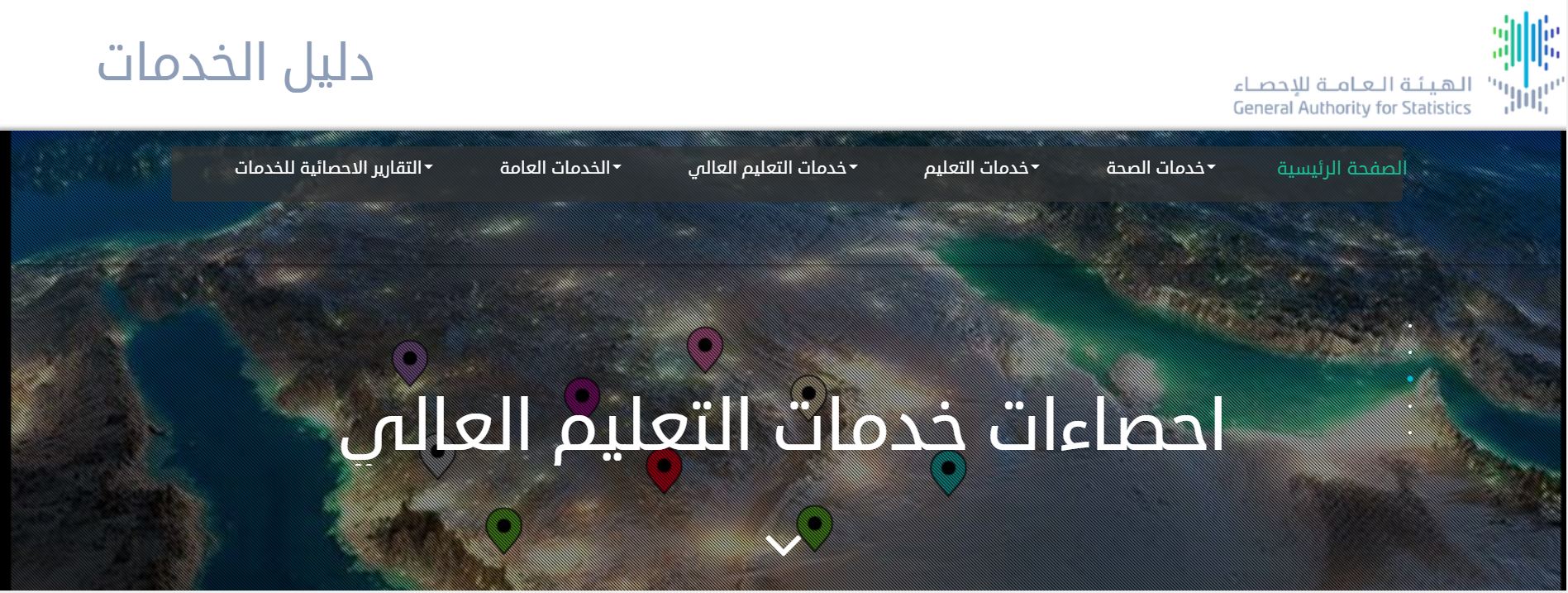
الهيئة العامة للإحصاء تنشر البيانات الإحصائية للخدمات عبر "الخريطة التفاعلية"
It links data to a geographical location to analyze and extract reports
GaStat Launches an “Interactive Map" to Present Statistical Data for the Services in Saudi Arabia
As part of its efforts to support decision makers and policy makers and enable their customers to use statistical data and access them based on their needs, GaStat has launched the "Interactive Map" on its official website www.stats.gov.sa for the Services Guide that was recently released by the Authority, which is the unified reference for the services available in different regions of the Kingdom’s cities and villages.
The interactive map is a technical tool that reviews statistical data by linking the statistical data to the geographical location to show the spread of the services on an interactive map for the Kingdom. This will add extra features and enable the user to make logical questions as well as spatial analysis on the services database. It also enables the user to reach the statistical data of the geographical location clearly for the different distribution of the services at the Kingdom’s level.
Moreover, the interactive map provides basic data for planners, policy makers and decision makers based on the names in the administrative regions. It depends on the data classification in five major groups that include: health services, education services, higher education services, public services, statistical reports of services. The map can review the details of each service according to the service provider, which allows the user to perform a search by specifying the names that contain a specific service within a specific search, or to identify the nearest populated area on the map. It also displays the distribution of services according to the type of service or the administrative areas. Additionally, it includes a "service calculator" which is a tool for making logical queries on the database. The “services calculator” enables a logical search of all the elements of the database and it reviews the results on the map to understand the form of geomagnetic distributions of any search and the possibility to extract the results on an Excel file.
The interactive map provides the totals, components and distributions of the services in Saudi Arabia at the level of its administrative regions, illustrated by graphs and geographical maps. It also offers an application designed to release statistical reports for various services at the level of the administrative region, governorate, municipality or populated area based on the needs of the user and with the possibility to print a report for the search results.
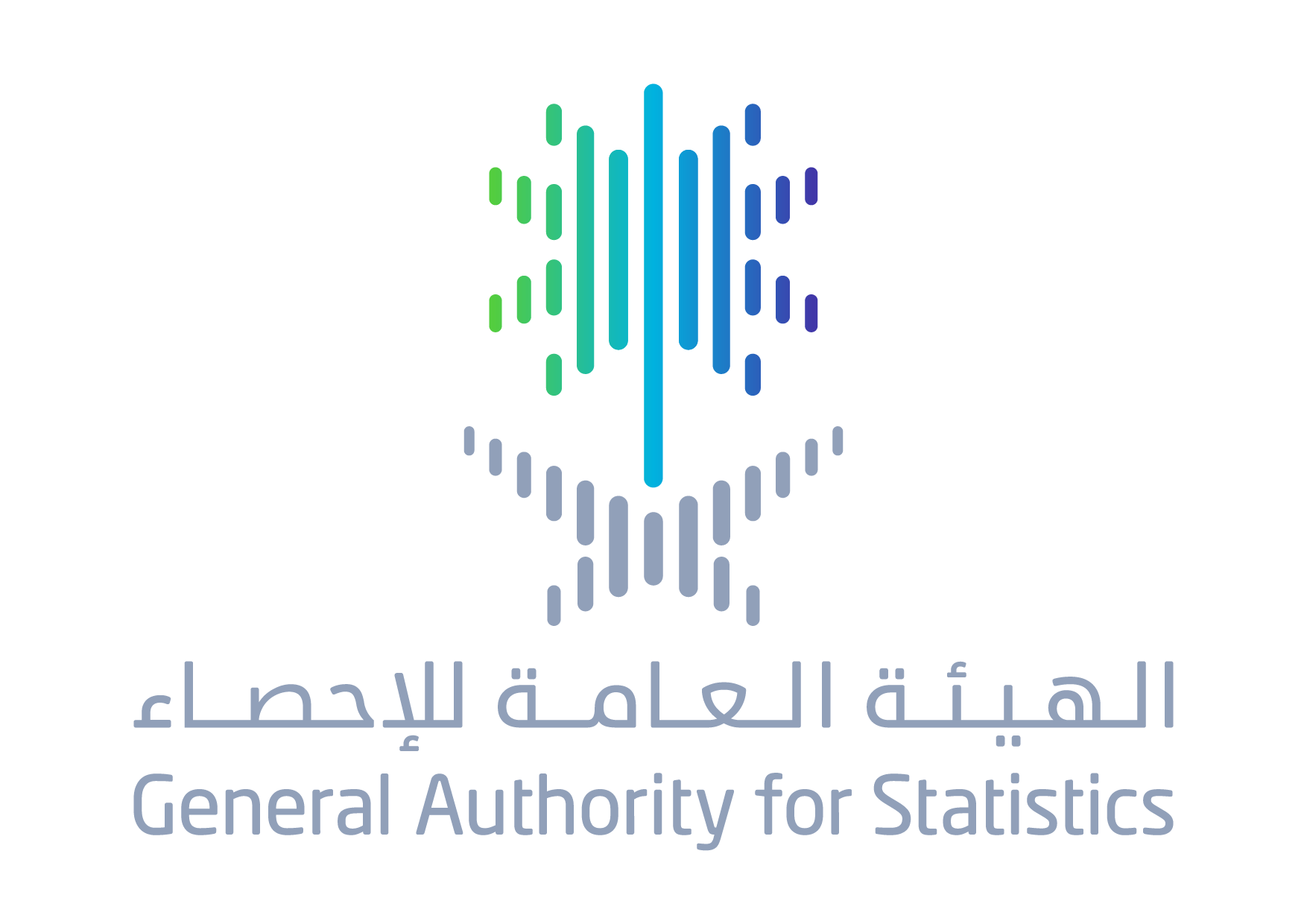
الهيئة العامة للإحصاء تبدأ في المرحلة الثانية من "تحديث دليل المسميات السكانية" تمهيداً لتعداد 2020
Including Aseer Region, Al baha, Jazan and Najran
The General Authority for Statistics Starts the Second Phase of Updating the Guidebook for the Populated Areas, in Preparation for the 2020 Population Census
In preparation for the population and houses census project (2020- 1441 AH) GaStat started to work according to a series of steps and in coordination with a number of government agencies on the technical arrangements of the implementation “for updating the populated areas guidebook”. It is considered the first field steps proceeding the census 2020 project. These steps are according to a timetable that includes all the stages of updating the guidebook for the populated names for different regions of the Kingdom and it includes: Aseer Region, Al baha Region, Jazan Region and Najran Region. In addition, there will be a number of stages that covers all the Kingdom regions during this year 2018.
This project aims to update the guidebook for the populated areas in the field and to process its data by observing all the changes occurred in the guidebook. Moreover, during the updating process, the number of dwellings and establishments in the populated areas are considered and distributed to statistical work areas, also linking the populated areas to the national address, identifying the populated areas on maps and making any necessary divisions. As well as counting the rugged areas, Badia areas and areas requiring prior coordination.
On the other hand, the General authority for statistics (GaStat) has recently held the first specialized workshops to discuss the census form (2020) within a series of workshops related to the form. And that was with the participation of some experts and specialists from the GaStat, and a number of relevant government agencies.
The project of population and housing census (2020- 1441 AH) aims to collect and publish the demographic, social and economic data of the population to provide the requirements of the government of basic data on population and housing to build the development plans, also the needs of researchers and planners, and to provide a new framework for all of the specialized statistical researches that are conducted based on the sample method. Additionally, finding a broad base of data and using it as a reliable source to conduct studies and researches required by the development programs, providing the data and indicators of population periodically to measure the population characteristics changes over the time, making local, regional and international comparisons, and to review, evaluate the population estimates in the future.
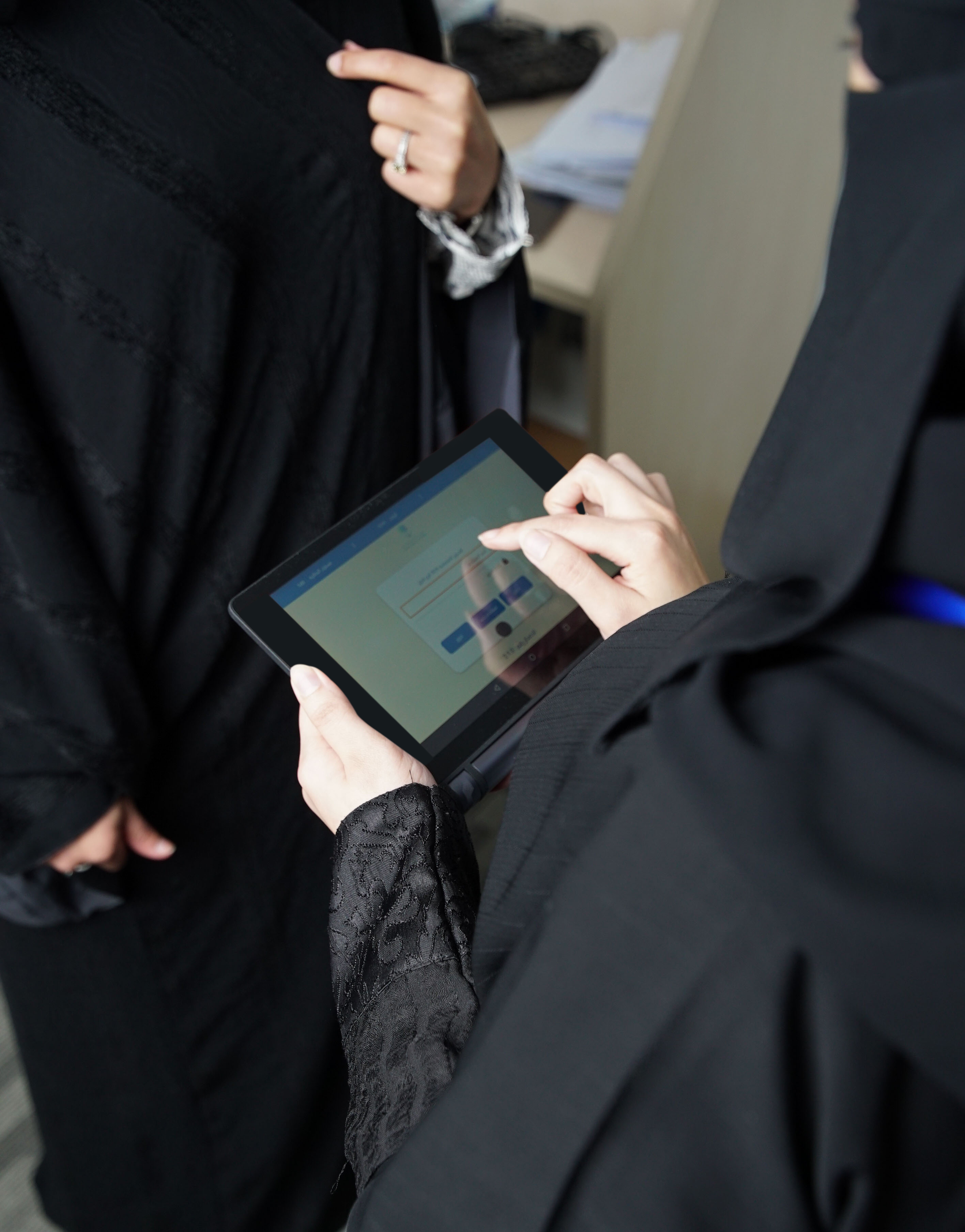
الهيئة العامة للإحصاء تتجه لتفعيل دور " المرأة " في العمل الميداني الإحصائي
With Participation of Ektefaa Charity Association in Jeddah
GaStat Tends to Activate the Role of ‘’Women’’ in the Statistical Fieldwork
GaStat tends to strengthen the statistical fieldwork with trained field staff of female statisticians in various regions of the Kingdom in order to facilitate the way of providing information to families without a male head, emphasizing the role of women as one of the active forces in the statistical sector in the Kingdom of Saudi Arabia. Where the official spokesman of GaStat, Mr. Taiseer Almofarrej, confirmed that GaStat has completed the preparation of training programs for female statisticians and field work experience.
GaStat cooperated with Ektefaa women's charity association in Jeddah to supervise the process of statisticians’ qualifying and training and to participate in the household related surveys in Jeddah, Riyadh, Hofuf, and Jazan as they have previously worked in this filed. The women’ fieldwork experience is considered one of the programs that prepares them for 2020 population census and other statistical surveys. Almofarrej added that this opportunity will contribute in facilitating data collection from families headed by a woman. Moreover, it will contribute in opening up new areas of women work and increase the women's participation in development to achieve the vision of KSA.
In addition to Ektefaa Association in Jeddah, which supervised the program, it is worth mentioning that a number of associations have participated in this experience, including (Ensan) charity committee for orphans Care in Riyadh, Al-bir society in Al-Ahsa, and Al-bir society in Jazan. Ektefaa Charity association, which is one of the specialized charities in the field of surveying and information collecting and documenting, has provided GaStat with a study on their previous experience on conducting a field survey. The study clarifies the importance of females’ engagement in the implementation of field surveys concerning household affairs. GaStat will evaluate this experience and sit a road map to activate the role of women in the field works that target households.
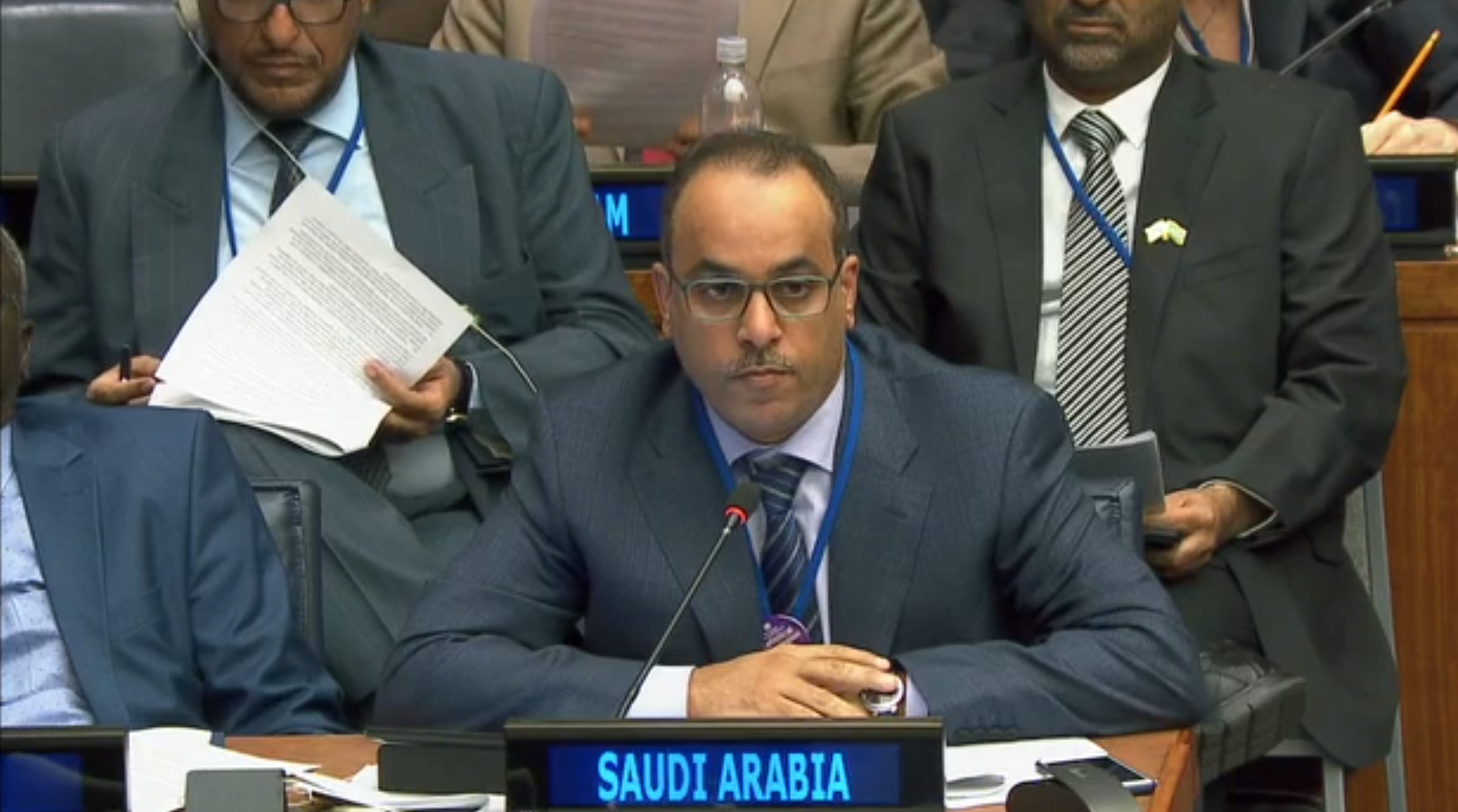
المملكة تختتم مشاركتها في أعمال الدورة (49) للجنة الإحصائية للأمم المتحدة
In order to develop the statistical sector and to follow up sustainable development goals
Saudi Arabia Ends its Participation in the Works of the United Nations Statistical Commission (49th Round)
Saudi Arabia Ends its Participation in the Works of the United Nations Statistical Commission (49th Round). It started last Tuesday until yesterday evening at the United Nations headquarters which is in New York City . In addition, the delegation headed by his Excellency Dr. Fahad bin Sulaiman Altekhaifi, president of the General Authority for Statistics. He indicated that the participation was an extension of the authority strategy for international participation. Also, to benefit from the best statistical practices because it reflected on the development of the statistical sector in the kingdom of Saudi Arabia. Moreover, he added that the kingdom of Saudi Arabia reviewed number of development axes for the statistical sector. During the works of 49th round, there was several presentations and interventions from co-sponsor delegation over four days. AL-Tekhaifi showed the statistical transformative experience was one of the axes where the authority addressed the road map and the dimensions on which it relied. Which is focusing on the importance of the client, quality and the development of the statistical sector. He mentioned that the KSA experience concerned the participants, and the progress of the statistical surveys reflect the affectivity and the importance of the listening to the clients from government entities and data users. Where the average of the surveys perversely were not over than eleven surveys in one year, but now in 2017 there are more than forty-two field surveys. In order to meet the requirements of the government entities and data users accordance with the regional and international requirements. At the level of the international statistical classification, the president of authority indicated that the authority focused on developed the statistical sector in KSA in several trends, Such as unified the use of international statistical classifications in the statistical surveys and administrative registers of ministries, government entities and privet sectors. Moreover, its first steps were unified the use of international industrial classification for economic activities in administrative registers (ISIC4), for all sectors and entities in the country. While, sector workshops were hold and meet bilaterally to define and to raise awareness of the classification. Also, to explain the mechanism of the application, and the importance of the study of the technical fields for all entities that related to. In order to ensure the access to the identical results based on one axis for the guide. Furthermore, the authority will continued the same approach for the rest of international classifications. Where, the same approach of national classification of occupation is applied recently (ISCO-08). The work of (49) round dealt with the household surveys, while authority confirmed that the household surveys is an important and main source for the different social statistics. That's because they are an active element for all the statistical systems, which based on provide several social indicators. It also considers as an important element to provide the related data of monitor progress in order to achieve the goals of sustainable development, under multitude requirements and challenges which faced by the available data.
GaStat Have focused on conducting a share amount of survey on household in that matter. In 2017 Among all the Surveys 17 of them was a household survey, and planning on doing 20 Household survey this year. The Authority is paying a great importance in register data, and has launched a numerous number of partnerships, initiatives and projects to link all the concerned institutions in the direction to come up with data that provides a lot of statistical indicators, also reducing the need for field survey.
United Nation Statistical Commission agenda included a number of topics, surrounding the open data. The participant delegators have indicated a number of steps taken by The Kingdom of Saudi Arabia on activating the Open data, to establish a high-level national committee for open data, at a ministerial level, led by The General Authority of Statics. To supervise the work regarding open data in Saudi Arabia, and strengthening coordination and partnership between the parties concerned. In addition to that, the project of Saudi Statistical Portal, which the authority is working on with a number of governmental institution, that offers statistical information’s in an up-to-date and easy-to-use way. Also, applying the best technical tools to access the information quicker and better, and applying the standards of data disaggregation as an open data, by international standards. As well as developing the digital content of the portal (e-content). And Increasing the level of e-reediness, In addition, further development of legislative and regulatory framework. The portal wouldn’t be only for the Authority, it would allow the all the institution, Authority’s and Government Institutions, to display their statistics in the same modern way, and working on strengthening the content with open data. The portal will support the social participation; it will allow visitors to publish their articles. The delegators have declared that this project consist of processing the basic data of GaStat, in addition to the other governmental data and the privet sector, to serve as convertible data which could be interactive graphics. GaStat has represented Saudi Arabia in this field lately as a member of the International Labour Organization of Big data and Official States-UN, whose membership includes 22 countries and 9 international authorities’.
On the other hand, GaStat have presented, through their participation, about their current experience in National Statistical Data(MASDAR) for conducting data and statistical indicators from the concerned authorities, and work with them to provide, publish and exchange data and national statistical indicators through Databases and specify electronic portals. Which support making decision in Saudi Arabia, also it’s a solid Informational bank to support Saudi Arabia 2030 Vision and National Transformation Programme 2020. GaStat have declared through the presentation that the goal of this programme is to build a comprehensive national statistical database which have all the statistical data from all the inner and outer sources to produce tabulations, indicators and analysis where the users and analysts need those data in or out of the Authority for statistical references to support decision, and making all of the development plans.
On the margins of the round the participant Saudi delegates met with a number of statistical commissions relevant to housing, social and economic statistics, as well as the South Korean delegates to discuss the road map of reinstate the agreement between the two countries.
It started at the United Nations headquarters which is in New York City, on the last Tuesday until yesterday evening. In addition, the delegation headed by his Excellency Fahad Ibn Sliman AL-Tekhaifi who is the president of the general authority for statistics. He indicated that the participation was an extension of the authority strategy for international participation. Also, to benefit from the best statistical practices because it reflected on the development of the statistical sector in the kingdom of Saudi Arabia. Moreover, he added that the kingdom of Saudi Arabia reviewed number of development axes for the statistical sector. During the work of (49) round there was several presentations and interventions from co-sponsor delegation over four days. AL-Tekhaifi showed the statistical transformative experience was one of the axes where the authority addressed the road map and the dimensions on which it relied. Which is focusing on the importance of the client, quality and the development of the statistical sector. He mentioned that the KSA experience concerned the participants, and the progress of the statistical surveys reflect the affectivity and the importance of the listening to the clients from government entities and data users. Where the average of the surveys perversely were not over than eleven surveys in one year, but now in 2017 there are more than forty-two field surveys. In order to meet the requirements of the government entities and data users accordance with the regional and international requirements. At the level of the international statistical classification, the president of authority indicated that the authority focused on developed the statistical sector in KSA in several trends, Such as unified the use of international statistical classifications in the statistical surveys and administrative registers of ministries, government entities and privet sectors. Moreover, its first steps were unified the use of international industrial classification for economic activities in administrative registers (ISIC4), for all sectors and entities in the country. While, sector workshops were hold and meet bilaterally to define and to raise awareness of the classification. Also, to explain the mechanism of the application, and the importance of the study of the technical fields for all entities that related to. In order to ensure the access to the identical results based on one axis for the guide. Furthermore, the authority will continued the same approach for the rest of international classifications. Where, the same approach of national classification of occupation is applied recently (ISCO-08). The work of (49) round dealt with the household surveys, while authority confirmed that the household surveys is an important and main source for the different social statistics. That's because they are an active element for all the statistical systems, which based on provide several social indicators. It also considers as an important element to provide the related data of monitor progress in order to achieve the goals of sustainable development, under multitude requirements and challenges which faced by the available data.
GaStat Have focused on conducting a share amount of survey on household in that matter. In 2017 Among all the Surveys 17 of them was a household survey, and planning on doing 20 Household survey this year. The Authority is paying a great importance in register data, and has launched a numerous number of partnerships, initiatives and projects to link all the concerned institutions in the direction to come up with data that provides a lot of statistical indicators, also reducing the need for field survey.
United Nation Statistical Commission agenda included a number of topics, surrounding the open data. The participant delegators have indicated a number of steps taken by The Kingdom of Saudi Arabia on activating the Open data, to establish a high-level national committee for open data, at a ministerial level, led by The General Authority of Statics. To supervise the work regarding open data in Saudi Arabia, and strengthening coordination and partnership between the parties concerned. In addition to that, the project of Saudi Statistical Portal, which the authority is working on with a number of governmental institution, that offers statistical information’s in an up-to-date and easy-to-use way. Also, applying the best technical tools to access the information quicker and better, and applying the standards of data disaggregation as an open data, by international standards. As well as developing the digital content of the portal (e-content). And Increasing the level of e-reediness, In addition, further development of legislative and regulatory framework. The portal wouldn’t be only for the Authority, it would allow the all the institution, Authority’s and Government Institutions, to display their statistics in the same modern way, and working on strengthening the content with open data. The portal will support the social participation; it will allow visitors to publish their articles. The delegators have declared that this project consist of processing the basic data of GaStat, in addition to the other governmental data and the privet sector, to serve as convertible data which could be interactive graphics. GaStat has represented Saudi Arabia in this field lately as a member of the International Labour Organization of Big data and Official States-UN, whose membership includes 22 countries and 9 international authorities’.
On the other hand, GaStat have presented, through their participation, about their current experience in National Statistical Data(MASDAR) for conducting data and statistical indicators from the concerned authorities, and work with them to provide, publish and exchange data and national statistical indicators through Databases and specify electronic portals. Which support making decision in Saudi Arabia, also it’s a solid Informational bank to support Saudi Arabia 2030 Vision and National Transformation Programme 2020. GaStat have declared through the presentation that the goal of this programme is to build a comprehensive national statistical database which have all the statistical data from all the inner and outer sources to produce tabulations, indicators and analysis where the users and analysts need those data in or out of the Authority for statistical references to support decision, and making all of the development plans.
On the margins of the round the participant Saudi delegates met with a number of statistical commissions relevant to housing, social and economic statistics, as well as the South Korean delegates to discuss the road map of reinstate the agreement between the two countries.

الهيئة العامة للإحصاء تبدأ باستقبال الطلاب والطالبات بمعرض "الإحصائي الذكي" بالتعاون مع "سايتك" الخُبر
Aiming to raise statistical awareness among students by using a scientific and attractive way
GaStat starts receiving students in “ The smart statistitician” exhibition in cooperation with “Scitech” Khobar
As part of its plan to raise statistical awareness among all society categories including school students, GaStat organizes the exhibition of “ The smart statistitician” in cooperation with Prince Sultan bin Abdulaziz Centre for Science and Technology “ Scitech” in Al Khobar city. The exhibition events are held in the centre during the period 9-20 Jumada the second 1439 H corresponding 25th of February- 8th of March 2018.
The exhibition which targets the students of intermediate schools, aims at showing how important is statistics in the life of students by using a scientific and attractive way. It also aims at identifying the most distinct concepts associated with statistics, in addition to raising the level of statistical awareness among students. Furthermore, this exhibition enhances the students’ recognition of the role of statistical entities and field statisticians, and the role of provided data accuracy on development as students are considered effective tools in conveying what they learn to their households.
The exhibition starts receiving the students by a demo video, so the students can get new scientific information in an attractive and entertaining way. The video will introduce statistics, the difference between statistics and mathematics, the General Authority for Statistics’ role, the role of students and households in GaStat work, and the way statistical research are implemented by simulating this experience and making students act like statisticians in their household visits.
The exhibition, which opens at 9 AM and closes at 1 PM (week days), includes many competitions such as the competition of the regions and numbers which aims at providing information about the population numbers in each region. There is also the competition of statistical symbols which teaches students about the importance of population and housing census and all statistical surveys in general.
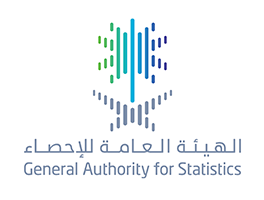
الهيئة العامة للإحصاء تصدر "دليل الخدمات "السادس عشر 2017م وتعرض نتائجه عبر خريطة تفاعلية على موقعها الإلكتروني
General Authority for Statistics Releases the Sixteenth “Services Guide 2017” and View Its Results in an Interactive Map on Its Website
More than 5,800 tables covering the information of more than 16,000 populated areas
General Authority for Statistics issues the sixteenth “Services Guide 2017” and view its results in an interactive map on its website
On Monday 10/6/1439H - 26/2/2018, GaStat issued the sixteenth Services Guide of cities and villages’ statistics on its official website. This guide is considered an official unified reference for all services of governmental and private entities in the different Saudi regions with all their cities and villages. The guides of the thirteen regions contain data and information for 16.263 populated areas (city – village), including geographical information and data, educational and health serveries, and data related to the availability of administrative, social, and agricultural services as well as public services. This guide contains (5810) detailed tables.
Moreover, this guide, which was prepared by 27 entities, is one of the most important statistical references for the data of cities and villages. It is issued by GaStat every three years in order to provide a unified and official reliable data and information at a high level of accuracy. These data and information are about all available services of cities and villages. So that it can be a unified reference for all government ministries, institution and organization, researchers, students, and media.
The guide of each administrative region includes geographical data and information on the level of populated areas (city, village) and their services such as the services of public and privet education with their three stages, Quranic schools services, higher education services, technical, industrial, agricultural, and health education services, scientific, vocational, and commercial institutes services, institutes for persons with disabilities services, elderly and kindergarten schools services.
Furthermore, there are other services such as health services which include hospitals, health-care centers, public and privet clinics, Saudi Arabian red crescent services, data of administrative centers (governorate, municipality), traffic, police, and civil defense centers, departments of civil affairs, passport, Awqaf (religious affairs department), labor offices, committee for the propagation of virtue and prohibition of vice, writings of justice, courts, municipalities, social security offices, social development centers, ministry of agriculture and its brunches, agricultural development funds, real estate’s development fund, industrial development fund, lending bank, and the branches of ministries and authorities .In addition to the public services which include electricity, water, telecommunications, post offices, travel and tourism agencies, and banking services.
GaStat declared today that the data reference year is the fiscal year of 1436 H/1437 H (2016). However, the public education services guide results show that the total number of public and private primary schools in all thirteen regions is (14.688) schools, with (1.457.326) male students and (1.469.797) female Students.
As for the intermediate schools, the total number in all thirteen regions is (8.607) schools, with (694.612) male students and (657.043) female students. Whereas the total number of public and private high schools in all thirteen regions is (5.713) schools, with (647.292) male students and (633.821) female students.
The results of the services guide also show that there are (39) public and private universities in all thirteen regions of Saudi Arabia iincluding (688.644) male students, (752.356) female students, (41.954) male faculty members, and (34.037) female faculty members. However, the number of public and private colleges at the regional level has reached (112) colleges, (119,251) male students, (35,233) female students, (6,588) male faculty members, and (2,250) female lecturers.
According to the results of the guide of the health services, the total number of private and public hospitals has reached (469) hospitals, with (69.450) beds. Whereas the total number of government’s health care centers and private clinics has reached (4.808) centers in the Kingdom. Moreover, the total number of doctors in all government and private hospitals, government’s health care centers, and private clinics has reached (53.230) males and (25.917) females. Furthermore, the number of nursing staff has reached (30.849) males, and (131.896) females in the Kingdom. As for the total number of Red Crescent and Ambulance Centers, it has reached (397), with (4.850) paramedics, and (871) ambulance cars.
On the other hand, GaStat through its official website provides data of Services Guide through interactive map to keep up with the latest technology in the statistical field with a set of tools, functions, methods of research and logical analyses on the databases. As well as use Geographic Information Systems techniques in linking the statistical statement with the geographical coordinates of the site on the map to benefit from the spatial dimension as an element of the statistical statement in different searches and analyzes processes. It's worth noting that the Guide of Government Services Statistics for cities and villages of the Kingdom of Saudi Arabia released every three years based on the royal decree no. 3/w/26301 of 30/11/1401H states that the GaStat must arrange to release the Services Guide in cities and villages of the Kingdome of Saudi Arabia which contributes to the processes of planning and establishing future visions for development services to benefit the citizens in all Kingdom’s regions.

الأمير أحمد بن فهد نائب أمير المنطقة الشرقية يثمّن دور الهيئة العامة للإحصاء في تقديم بيانات وإحصاءات محدثة لكافة الجهات الحكومية
The Prince of the Eastern Province, Prince Ahmad Bin Fahad Values the Role of GaStat in Providing Updated Data and Statistics to All Government Entities
His Royal Highness the deputy prince of Eastern Province, prince Ahmad bin Fahad bin Salman bin Abdulaziz welcomed his excellency the President of the General Authority for Statistics, Dr. Fahad bin Salman Altukhifi and his delegation at his office in the principality court today Sunday. His Highness reviewed the latest data of the Eastern Province within the Services Guide 2017, released by the Authority through its website.
Additionally, he stressed that this high-level movement comes from the support and follow- up by the Custodian of the Two Holy Mosques King Salman bin Abdulaziz and His Royal Highness Crown Prince Mohammed bin Salman, may Allah protect them. Furthermore, it aims to push forward the Comprehensive Economic Development, as well as it spurs all government bodies including GaStat to work positively with the requirements of the stage. Also, he appreciated the role of GaStat in providing updated data and statistics to all government entities that support decision and policy makers.
His excellency the President of GaStat, Dr. Fahad Altukhifi clarified that the Eastern Region is witnessing a development on various levels led by his Highness the prince of the province and his deputy that lead us to follow these steps in the General Authority for Statistics, reflecting the numbers which are important indicators for the development across all governorates and regions. Moreover, he pointed out that the Services Guide 2017 published by the Authority through its website, includes statistics of services for the kingdom’s cities and villages. As well as it considers a unified official reference to the services of all governmental and non-governmental bodies available at different regions of the kingdom at the level of its cities and villages. Where it contributes to the processes of planning and establishing future visions for development services to benefit the citizens in all kingdom’s regions. The Guide, in which 27 governmental entities contributed to its preparation to be as a source of information for data, aims to provide geographic database for each populated area that has an accredited service, database on educational services, health services, social and development services, beside public services, administrative services, financial and banking services, as well as providing database for the most important service facilities at the level of kingdom’s regions.
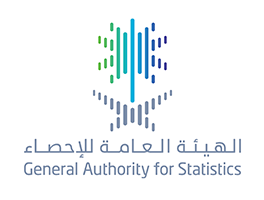
50 طالبا وطالبة ينخرطون في برنامج "التدريب التعاوني" للهيئة العامة للإحصاء" للفصل الدراسي الحالي
50 Students Participate at the General Authority for Statistics “Cooperative Training Program" this semester
The General Authority for Statistics has implemented the “cooperative training program’’ with the participation of 50 students from educational institutions during this semester for many majors including economics, statistics, accounting, media, mathematics, information technology, administration and law. The program provides the trainees with the opportunity to apply for a number of academic courses that students have taken within their educational institutions in the labor market. within a period of time to be counted in the academic graduation program. The training program, which runs from hours to four months, aims to help students gain the practical skills and efficiency in their fields of study in their university, allowing them to develop many of their practical experiences that may differ in nature from those gain over during periods of study. The training period helps colleges and universities to evaluate the academic preparation of their students through the report of their Cooperative Training Program, statements and job evaluation reports given by the direct supervisor to the trainee at the General Authority for Statistics. The "Cooperative Training" program aims to attract outstanding students from the newly graduated for the General Authority for Statistics. The program also aims to strengthen the relations between the General Authority for Statistics and the educational institutions in the public and private sectors.
The General Authority for Statistics aims to do a couple of programs and projects to activate the academic sector considering it one of the four basic components of the statistical sector besides the Authority and the statistical units in government agencies and the private sector. These programs goal is to participate with fields that are related to the statistical work and the future plan for statistics in the kingdom and its transformation program.
And also to cooperate with universities to evaluate or develop the products of the statistical work. The Authority has given a couple of programs to the Saudi universities during the last period.
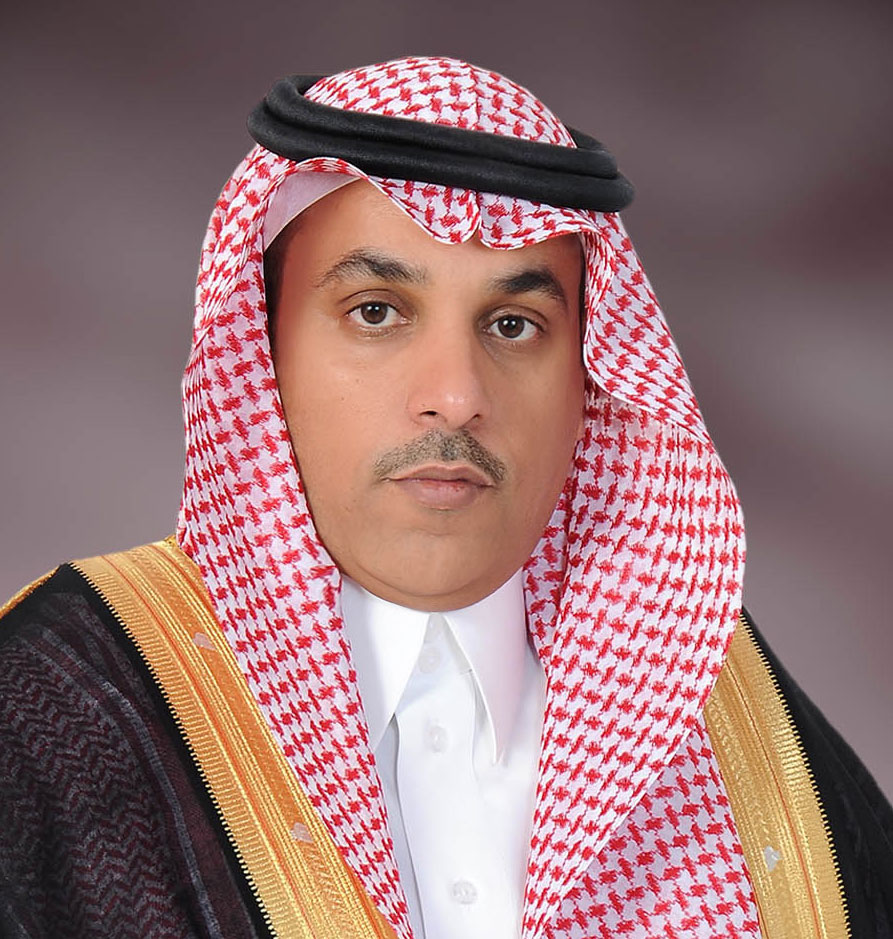
" إحصاءات السعودية " وبـ (3) قيادات إحصائية وتقنية عضو في مجموعة العمل العالمية للبيانات الضخمة للإحصاءات الرسمية
After joining the program of international comparisons and experts of tourism satellite accounts, and to confirm its role in the international statistics map
“Saudi Statistics” is a member in the Global Work Group on big data for official statistics
After being a board member in the international comparison program and the international experts team for developing tourism satellite accounts 2017, Saudi Arabia, represented in the General Authority for Statistics (GaStat), has become a member in the Global Work Group (GWG) on big data for official statistics which pertains to the United Nations. This group includes 22 countries and 9 international authorities. Saudi Arabia has decided to be a member in this group to reflect the positive role of GaStat in the UN different statistical programs. It also wants to show its progress in the field of big data. GaStat is represented in this group by three statistical and technical leaders who are considered experts in big data; dr. Mohammed Alahmed, vice president of statistical innovation and customer service, Mr. Khalid Aldalqan, deputy of information technology, and Dr. Aseel Almansour, director-general of statistical innovation department.
Dr. Fahad bin Sulaiman Altekhaifi, GaStat president, asserted that Saudi Arabia has decided to be a member in the global work group on big data for official statistics to confirm the effective role of Saudi Arabia in the international statistics map. This membership will reflect the results of the Saudi statistical sector’s strategic transformation which Saudi Arabia is really concerned about and support for its role in enhancing the national development decisions. He added, joining this group will enhance the role of Saudi Arabia in the field of big data internationally. The participation of GaStat in this group is represented through capacity building and raising awareness about the importance of big data, in addition to joining the global platform for data, services, and applications.
Altekhaifi indicated that the participation of those three national leaders among an elite of worldwide data and statistics experts under the umbrella of the United Nations Statistical Commission is considered an opportunity to benefit from the group works’ outputs. It will contribute in developing the use of big data in Saudi Arabia as these data are one of the very important recent sources of information, in addition to the field surveys and register data. Moreover, it will have an essential role in addressing issues pertaining to methodology, quality, technology, data access, legislation, privacy, and management. It will also pave the way for collaborations with the most distinct statistical organizations such as the international institutions, data producers, and big data experts. This might increase the quality of statistical products provided by GaStat to support decision and policy makers. Furthermore, the group works and results will collaborate in raising the level of information exchange about the big data projects in the statistical community.
It is worth mentioning that the creation of the Global Working Group (GWG) on Big Data for Official Statistics was agreed at the 45th session of the UN statistical commission which was held last November. The group work aims at investigating the benefits and challenges of Big Data, including the potential for monitoring and reporting on the sustainable development goals. In addition to Saudi Arabia, the Global Work Group includes 21 representatives and some international organizations: Eurostat, GCC-Stat, ITU, OECD, UNECE, UNESCAP, UNSD, UN Global Pulse, World Bank
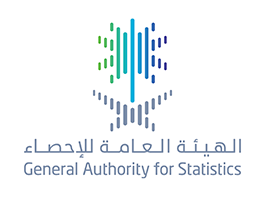
الهيئة العامة للإحصاء تٌصدر الرقم القياسي لأسعار العقارت للربع الرابع 2017
The Indicator Covers Three Main Sectors (Housing, Commercial, Agricultural)
GaStat Releases Real-Estate Prices Index for the 4th Quarter 2017
The General Authority for Statistics (GaStat) released on Sunday, 11 Jumada Al-Awal 1439H corresponding to January 28, 2018, its quarterly indicator for the General Index of the Real Estate Prices Q4 2017 in Saudi Arabia and published it on its official website www.stats.gov.sa.com .
Furthermore, the indicator is based on the data records about real-estate’s transactions available at the Ministry of Justice, and it is an important tool to support economic and statistical decision makers regarding the changes of property prices and future forecasts during different periods of time. The indicator covers three main sectors consisting of several types of real estate: housing sector which includes the followings (plot of land, building, villa, apartment and house), commercial sector includes (plot of land, building, exhibition, commercial center or shop), agricultural sector with one category which is the agricultural land.
On the other hand, the indicator recorded a decline amounted to (3.2%) compared to the same quarter last year (Q4 2016). The indicator attributed this decline to the decrease of the main sectors composing it: the housing sector (2.2%), the commercial sector (5.7%) and the agricultural sector (0.6%).
Moreover, the indicator edged down (0.3%) compared to the previous quarter (Q3 2017) reaching (84.6%) in the fourth quarter of 2017 compared to (84.9%) for the previous quarter. This decline is attributable to the main sectors composing it where they witnessed varying degrees of decline: (0.2%) for the housing sector, (0.7%) for the commercial sector and (0.1%) for the agricultural sector.
It is worth mentioning that the release of the Index of Real Estate Prices for Q4 2017 came along with the introductory meeting of Jeddah Chamber of Commerce and Industry, this meeting was within the Authority's plan to raise the statistical awareness of all its customers in which a number of meetings were held previously to discuss Real Estate Price Index in Riyadh and Dammam last year.
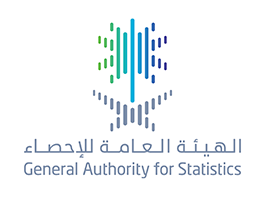
الهيئة العامة للإحصاء تُصدِر نتائج مسح المساكن 2017
It Shows the Housing Characteristics of Dwellings Occupied with Saudi Households
Housing Survey 2017 Findings Now Released by GaStat
The General Authority for Statistics (GaStat) released on Thursday, 8 Jumada Al-Awal 1439H (25 January 2018) the findings of the Housing Survey 2017, through its official website www.stats.gov.sa.com. This survey was implemented during the period (17/7 - 22/8) / 1438H) corresponding to (14/4 - 18/5/2017).
Furthermore, it was prepared in cooperation with the Ministry of Housing and it shows the housing characteristics of dwellings occupied with Saudi households. On other hand, Housing Surveys are one of the most important data sources necessary for development planning in the economic and social fields in general and for housing initiatives in particular, both at the national and local levels. Moreover, Housing Surveys aim to: provide data about the dwellings occupied with households at the administrative level of the Kingdom of Saudi Arabia, study the influence of the surrounding environment and the housing characteristics, create database for housing in order to provide the requirements of the government and the needs of the planners and researchers from the main data about the housing characteristics required by the development plans, provide data and indicators on housing periodically to measure changes in housing characteristics over time and to make local, regional and international comparisons and measure the improvements and the growth in the housing fields by type of dwelling, age of dwelling occupied with the household.
In addition, (owned) dwellings and occupied with Saudi households amounted to (49.91%) according to the Housing Survey 2017 findings. (Owned) dwellings that were built by using non-reinforced concreate (clay, stone, bricks, slabs) are excluded from this, in which their rate recorded a decrease down from (13.38%) in 2016 to nearly (10%) in 2017. Furthermore, (rented) dwellings and occupied with Saudi households represent (38%), and (1.69%) for dwellings provided by employer. It is worth mentioning that findings of this survey did not show the individuals’ ownership of dwellings rate but it discusses the housing characteristics such as: type of tenure of the household’s dwelling included in the field survey.
Additionally, villas occupied with Saudi households accounted for (29.44%) of the total number of dwellings occupied with Saudi households, the percentage of apartments occupied with Saudi households was (43.67%) and (7.73%) was for floors in villas occupied with Saudi households.
On the other hand, the findings showed that the predominant material used in the construction of dwellings occupied with Saudi households was the reinforced concreate by (87.95%). Dwellings occupied with Saudi households, in which (brick) was used in its construction accounted for (11.88%).
In terms of household energy, the findings showed that the percentage of dwellings occupied with Saudi households that depend on the public water network as a source of water recorded (74.28%) of the total number of dwellings occupied with Saudi households, and (99.8%) of dwellings depend on the electricity public network as its main source. In addition, (7.88%) was for dwellings occupied with Saudi households for less than (5) years, (25.38%) was for dwellings occupied with Saudi households between (5 and less than 10 years), and dwellings occupied with Saudi households between (10 to 20 years) accounted for (30.09%).
Moreover, GaStat indicate that census surveys conducted every ten years depend on the comprehensive inventory of all dwellings. However, housing surveys depend on the sampling method of selected households chosen in a scientific manner. The survey form includes accurate details to support housing initiatives in which it allows the possibility of studying housing characteristics in a more comprehensive and detailed manner. The findings reveal the housing characteristics of the dwellings occupied with Saudi households at the administrative regions of the Kingdom. Many indicators can be extracted through this survey, such as: dwelling type, approximate age of the dwelling, building material, flooring material, type of possession, source of water, drinking water, source of electricity for the dwelling and other housing indicators related to the dwelling.
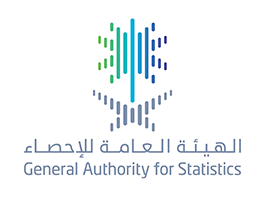
الهيئة العامة للإحصاء : (2.9 %) نسبة انتشار الإعاقة ذات الصعوبة ( البالغة ) بين السكان السعوديين
A specialized survey, measuring the spread of disability, contains all disability statistics details
GaStat: (2.9%) of Saudi population have disability with (extreme) difficulty
To get real statistical indicators that reflect the disability spread rates in Saudi and the disability categories in terms of difficulty degrees and spread among society people to be a reference for developing policies, making decisions, providing proper services for persons with disability, and fulfilling the needs of planners, researchers, and those who are interested in disability studies, the General Authority for Statistics (GaStat) has issued a report containing the results of “ persons with disability survey 2017”. When defining disability and classifying its difficulty degrees, GaStat has relied on the elaborated definition of Washington Group on Disability Statistics which contains all difficulty degrees of disability: mild, severe, and extreme. The survey results indicated that (2.9%) of Saudi population have disability with extreme difficulty.
According to the survey results, Riyadh region has registered a disability rate of (25.13%) which is the highest rate of disabled persons compared to the other Saudi regions. However, Najran region registered the lowest rate of disability with (0.87%). The survey results have also showed that the most spread difficulty among disabled Saudi population who only have one difficulty is the visual impairment. Persons with disability who suffer from visual impairment have registered (46.02%) among all Saudi disabled population with different degrees: mild (67.8%), severe (28.5%), and extreme (3.7%). As for the most spread difficulties among Saudi disabled population who suffer from multiple difficulties, physical difficulties have registered the highest rate with (29.13%) with different degrees: mild (54.07%), severe (29.22%), and extreme (16.71%).
It is worth mentioning that persons with disability survey includes many tables that are already published on the website. More than 40 detailed tables that include a large number of statistical data such as disability rates with its different degrees and categories, disabled population structure regarding their age and type, educational status, and occupational status.

متحدث "الإحصاء" : معدلات البطالة تتم وفق معايير دولية، وتنشرها الهيئة بمختلف قنوات النشر على موقعها الرسمي وحسابات التواصل الاجتماعي
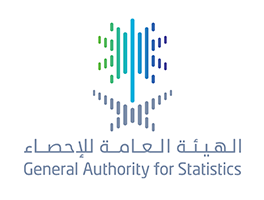
الهيئة العامة للإحصاء : استقرار في معدل البطالة للسكان السعوديين عند مستوى ( 12.8 % ) وانخفاض معدل البطالة الإجمالي ليصل ( 5.8% )
Within the Results of the Labor Market Bulletin for the Third Quarter of 2017
The General Authority for Statistics: Stability in the Unemployment Rate of the Saudi Population at (12.8%) and a Decline in the Total Unemployment Rate to Reach (5.8%)
The General Authority for Statistics (GaStat) published on its official website www.stats.gov.sa the Labor Market Bulletin for the third quarter of 2017, which provides comprehensive data and indicators on the labor market in the Kingdom from the estimates of the labor force survey conducted by the Authority on a quarterly basis, in addition to the labor market data from the administrative records of the relevant entities (Ministry of Labor and Social Development, Ministry of Civil Service, General Organization for Social Insurance, Human Resources Development Fund and National Information Center).
The results of the bulletin for the third quarter of 2017 showed stability in the unemployment rate of the Saudi population at its previous level during the second quarter of 2017, where it stabilized at (12.8%), (7.4%) for males and (32.7%) for females, and a decline in the total unemployment rate (15 years and above) compared to the second quarter of 2017, where it reached (5.8%) in this quarter (3.2%) for males and (21.1%) for females.
The total number of workers from the data of administrative records in the Kingdom of Saudi Arabia reached (13,758,064) indivisuals, the total number of Saudis jobseekrs from the records of administrative reached (1,231,549) individuals, (190,822) are males and (1,040,727) are females. The highest percentage of Saudis jobseekers in the age group (25-29) was represented by 31.3%. Moreover, the results showed that nearly half of the Saudi jobseekers hold Bachelor degrees and their percentages reached (45.8%).
According to the administrative records of the relevant entities, the total number of work visas issued reached 509,180. (22.3%) for the public sector, (37.8%) for the domestic sector and (39.9%) for the private sector.
The bulletin included a large number of detailed data on workers according to the regulations they are subject to, and according to the nationality, gender, age, administrative region and educational level, as well as data on job seekers, average monthly wage, working hours and domestic workers.
On the other hand, the official spokesman of the General Authority for Statistics (GASTAT), Mr.Tayseer Al-Mafarj, clarified that there is a difference between job seekers and unemployed. The "unemployed" according to the Labor Force Survey are the individuals (15 years and above) who were jobless during the period of the time reference (the survey period): the previous week of the household visit and have been looking for a job seriously during the four weeks prior to the household visit (they have at least taken one way to look for a job). This includes those who did not search for work during the four weeks prior to the household visit because they were waiting for a job or starting their own business in the coming period, where they had already been looking for work before the time reference period and at the same time they were able to work and were ready to join it (If available), during the week preceding the household visit.
Additionally, the definition of job seekers is the Saudi individuals (males or females) enrolled in the job search programs of the Ministry of Civil Service (Jdarah or Saed) and the Human Resources Development Fund (Hafiz). And they register their personal data, qualifications, practical experiences and CVs through an electronic system.
It is worth to mention that job seekers in the administrative records are not subject to the internationally recognized standards and conditions of unemployment approved by the ILO and therefore are not considered to be unemployed. Hence, not every job seeker is considered unemployed, he may be looking for work and is working in another job, this is the case in job seekers in government entities who are working, for example, in the private sector.
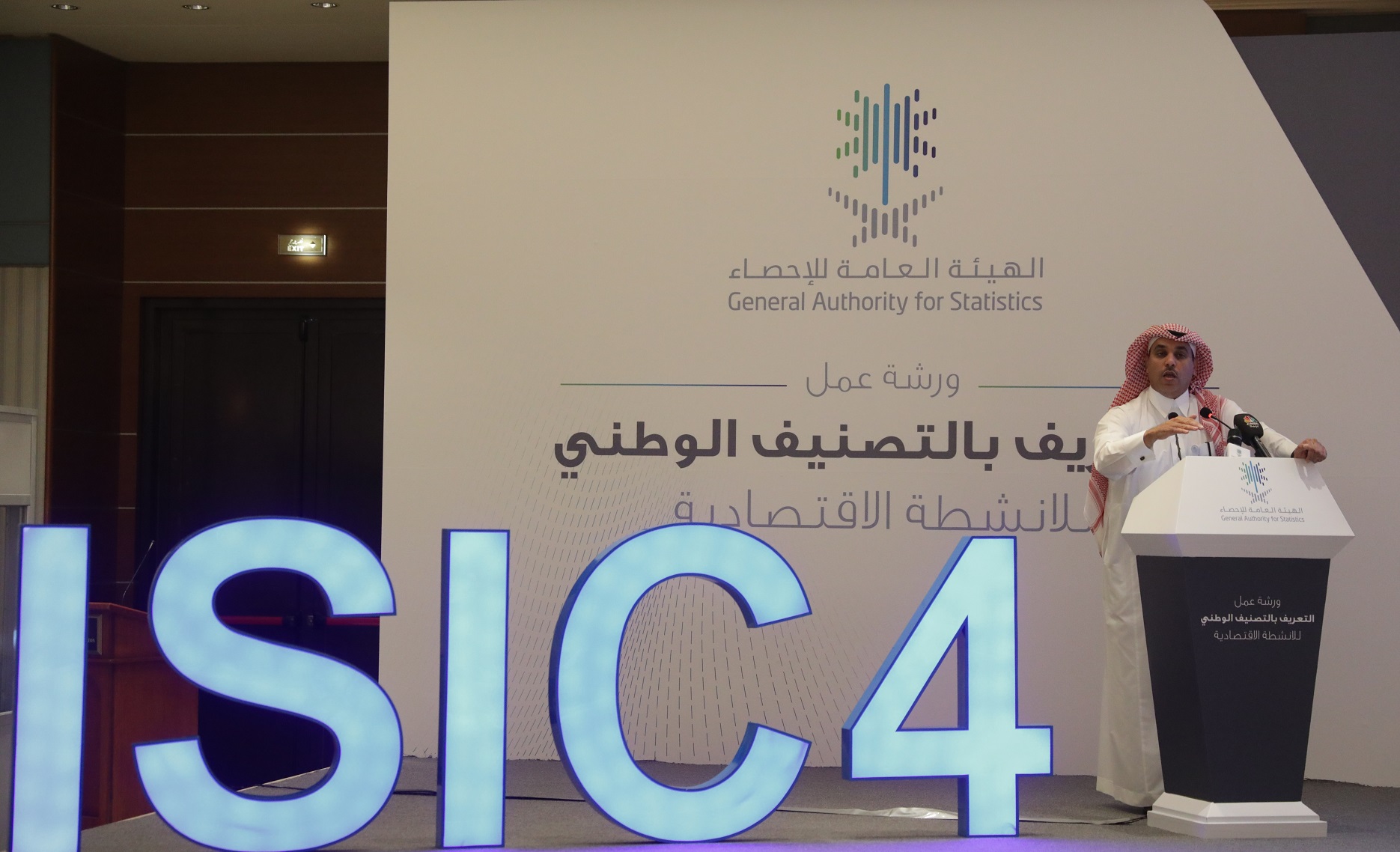
الجهات الحكومية تبدأ بتطبيق التصنيف الوطني للأنشطة الاقتصادية (ISIC4) منتصف الشهر الحالي
The General Authority for Statistics (GASTAT) Held an Introductory Workshop and Issued the Unified Guide
Government Entities Start to Implement the National Guide for Economic Activities (ISIC4) in the Middle of the Current Month
The General Authority for Statistics (GASTAT) explained that it has completed the preparations for enabling the government entities related to economic activities to implement the "National Classification for Economic Activities", the classification was taken from the International Standard Industrial Classification of All Economic Activities, the forth version (ISIC4), and was issued by the United Nations Economic and Social Council. And it is considered as an approved Classification for Economic Activities in the Kingdom of Saudi Arabia starting next Monday 14 Rabi Thani, 1 January 2018.
The official spokesman of the General Authority for Statistics (GASTAT), Tayseer Al-Mafraj, confirmed that the Authority has held several workshops for the relevant entities during the past period of time and prepared a unified guide and an electronic room for operations and communication in preparation for the start of the adoption of the National Classification for Economic Activities that can be defined as the way in which counting units can be collected according to a serial order and defined by homogeneous groups with a view to creating a general framework for comparison of statistical data at the local, regional and international levels. He also pointed out that the data of economic activity can be divided according to the guide prepared for this to specific levels in a manner similar to the characteristics of economic activities classified in one rank.
The official spokesman added that the implementation of the Unified Classification for the Economic Activities aims at creating a general framework for comparing statistical data at the local, regional and international levels, and providing a set of statistical data classified according to the economic activity. In addition, the implementation of the Unified Classification for Economic Activities contributes to the organization and restructuring of all sectors, supports the project of electronic connectivity between different entities, improves the quality of administrative records data of the relevant entities, and provides a comprehensive framework of economic activities to facilitate the handling of descriptive formulas automatically.
It should be noted that the original version of the Classification was adopted in 1948. Most countries have applied this Classification as their national classification to become an important tool for comparing statistical data on economic activities at the international level. The first version (ISIC_1) of the International Standard Industrial Classification of Economic Activities was issued in 1958, the second version (ISIC_2) was issued in 1968 and the third version (ISIC_3) was issued in 1990. Finally, in 2006, the United Nations Economic and Social Council adopted the Fourth Amendment to the International Standard Industrial Classification (ISIC4). The General Authority for Statistics (GASTAT) uses the Classification in all its economic and social products, and follows up the updates on the classification and recently it has been authorized to enable the government entities to apply it as an approved Classification for Economic Activities in the Kingdom.
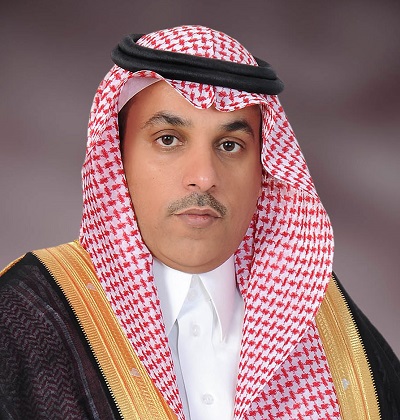
كلمة معالي رئيس الهيئة العامة للإحصاء د. فهد بن سليمان التخيفي بمناسبة ذكرى مرور السنة الثالثة لبيعة خادم الحرمين الشريفين 3 ربيع الثاني 1439هـ
GaStat president Dr. Fahad bin Sulaiman Altekhaifi word in the third anniversary of the custodian of the two holly mosques accession to the throne, 3rd of Rabee the second 1439H
When the king is present, there will be national prestige and achievements process
“King Salman bin Abdulaziz Al Saud” is a distinct sentence in the book of abode. His period of rule will be eternalized forever. This period represents a growth journey that will never stop. Three years of king Salman’s rule, a vision was drawn for the future. However, his policy of toughness gave the country a dignity with more wisdom and farsightedness, while determination helped in increasing the country’s achievements.
In the third anniversary of the custodian of the two holly mosques king Salman bin Abdulaziz Al Saud’s accession to the throne, the country’s agenda became full of achievements. Since king Salman’s period of rule has started, each day represents a whole year during which a future is drawn through establishing security, accomplishments, development, justice, honor, prestige and wisdom. These features led the country to be the most effective geographical area in the world map. They also gave it a historical metalepsis with many events in a non-stop epoch.
In the third anniversary of the king’s accession to throne, praise be to Allah for having such government which governs the country with Quran and Sunnah. Thanks God for belonging to such country that has a dominance in many levels because of its leading role towards security, peace, and stability. The kingdom wise attitudes toward the international and regional issues are still contributing in addressing many political, economic, social, and security affairs.
In the third anniversary of the king’s accession to throne, each citizen should be proud of being engaged in everything. This engagement story has started earlier since the periods of rule of king Abdulaziz bin Abdulrahman Al Saud and his sons (Saud, Faisal, Khalid, Fahad, and Abdullah) may all of them rest in peace. Presently, the story continues in the period of king Salman’s rule and hopefully will never stop.
In the third anniversary of the king’s accession to throne, every developmental sector has the right to announce its outstanding developments and achievements which could not be accomplished without the government support and efforts. This support aims at making the development a result of each project, a desire for all efforts, and an integration between all sectors in order to reach a brighter future, as the language of figures and statistics in all sectors is the language of facts and achievements.
In the third anniversary of the king’s accession to throne, our boarders become unattackable and our security is guaranteed, that is because of the top priority given to citizens’ security by our leadership. Our courage champions are working hard on our security sacrificing their own lives. In addition, our armies are always there when their brothers and neighbors need them. These all show how the sons of “Salman” are united to keep the country boarders secured and prevent intimidation.
In the third anniversary of the king’s accession to throne, we are proud of serving the two holly mosques. Under his leadership- may God support him-, all countries of the world are impressed of the services provided by Saudi citizens when receiving and serving the guests of Allah, as all public and private entities are working hard to have the honor of serving pilgrims, Omrah performers, and visitors. A clear evidence for that is the services and projects that were provided in the last three seasons of Hajj.
In the third anniversary of the king’s accession to throne, we are all witnessing the new steps followed to build a modern country with young spirits. Since king Salman’s period of rule has started, the young spirit has appeared in all executive and administrative entities and sectors. That is to show how the country is young and capable of reform and develop, so that all individuals can live prosperous lives under the umbrella of security and development.
In the third anniversary of the king’s accession to throne, we ( here in the General Authority for Statistics) are renewing the commitment intending to achieve the country’s expectations and objectives while keeping on supporting the development, as what the statistical sector in Saudi Arabia is witnessing nowadays is considered a transformation not only locally but also regionally and internationally. We will work hard to make the country in a very high position anywhere and everywhere.
In the third anniversary of the king’s accession to throne, we congratulate the custodian of the two holly mosques king Salman bin Abdulaziz Al Saud and his crown prince Mohammed bin Salman bin Abdulaziz (May God protect them all), with all our prayers to always keep this country secured, safe, and stable, and to protect our country and leaders. May the custodian of the two holly mosques live longer and May Allah reward him well.
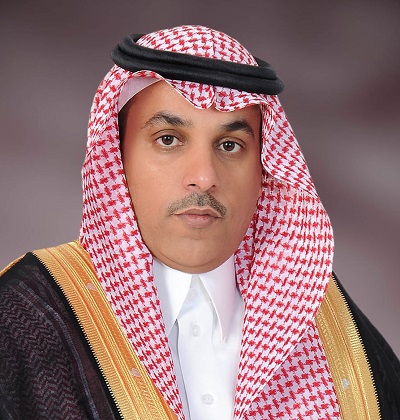
د. فهد التخيفي : ميزانية النماء .. اتجاهات تنمية وعناوين للشفافية ، وتأكيدٌ على دقة الأهداف
Congratulating The Custodian of the Two Holy Mosques and his Crown Prince, On the occasion of announcing the largest expenditure budget in the history of Saudi Arabia.
Dr. Fahad Altekhaifi: Growth budget, development and transparency trends, and emphasis on the accuracy of the objectives
On his behalf and on behalf of all members of the General Authority for Statistics (GASTAT) and all the statistical sectors in the Kingdom of Saudi Arabia, Dr.Fahad Bin Sulaiman Altekhaifi congratulates The Custodian of the Two Holy Mosques, King Salman bin Abdulaziz AL-Saud and his Crown Prince HRH Prince Mohmmad Bin Salman ALSaud, On the occasion of announcing the budget for the fiscal year 1439/1440 H as the largest expenditure budget in the history of Saudi Arabia. This achievement was a result of the directives of the wise leadership of this country to reduce the budget deficit for the current fiscal year by more than (25%) compared to the previous fiscal year despite the high expenditure. Dr. Altekhaifi stressed that the contents of the speech of the Custodian of the Two Holy Mosques in the budget declaration came to confirm the continuation of the development and improvement towards achieving the vision of the Kingdom (2030) to increase the size of the national economy and keep its growth. As well as, the continuation to diversify the economic base and income sources to enhance the ability to adapt to the developments and overcome the challenges and to ensure that the private sector can play a greater role in the development. Moreover, The Custodian of the Two Holy Mosques, in the budget declaration, stressed on the need to ensure that the burden on citizens will be minimized, he also stressed on dealing with the potential effects as well as supporting the private sector, identifying the objectives to reduce the budget deficit for next year to be less than (8%) of GDP despite the large and expanding budget and the continuation to reduce the dependence on oil. He also emphasized on the continuation to fight corruption and maintain the public money to pursue a bright future for the country.
In addition, Dr. Altekhaifi added that this speech confirms the keenness of the wise leadership to ensure that prosperity will prevail in all regions of the Kingdom and that was confirmed by the Custodian of the Two Holy Mosques also that this budget will continue to be disbursed to various development sectors in all regions of the Kingdom at high rates. The Custodian of the two Holy Mosques concluded his speech ensuring that he had kept in mind that he would continue to work towards comprehensive and balanced development to all regions of the Kingdom and that there is no difference between these regions.
The president of the General Authority for Statistics (GASTAT) stressed that the Custodian of the Two Holy Mosques' directive to all officials to raise the level of performance, develop government services, enhance the efficiency of expenditure and transparency to meet the aspirations and obtain the satisfaction of citizens for the services provided to them is a road map to be used by all government entities and in all areas of development.
On the other hand, Dr. Fahad bin Sulaiman Altekhaifi said that all the important changes in the structure and mechanisms of the Saudi budget are considered strong cornerstones for the future on the intermediate and long terms. The budget included anticipations about the economy performance on the intermediate term “five years” which assured how clear and accurate are the objectives that the country works on to achieve a financial balance in 2023. The announcement of these anticipations will be a fundamental base in managing the economic growth in all developmental fields. It will also enhance the transparency and disclosure values, which are values adopted by Saudi Arabia as strategic values in achieving the financial balance program as they comply with the announced objectives of the 2030 Saudi vision. Moreover, the announcement of the developmental funds and the investment fund collaborations in the capital and investment expenditure which exceeded the budget capital expenditure in the past years, in addition to the continuity and increase of the capital expenditure will have a strong impact on the economic development. Altekhaifi indicated that the 2018 budget statement is a result of the new political and economic policies which rely on strong bases both economically and administratively. It also asserts that we are going through the right path toward the future which started to be obvious through the wise economic management that the economic and development affairs council represents. The economic reforms that started with the announcement of the ambitious vision pushed the country towards a change through implementing a financial and economic policies system to improve the efficiency of the government expenditure, and found new non-oil income sources to create a kind of financial balance as a strategic objective on the intermediate term. This will be reflected on the economy of the country and will improve the citizen’s living standard.
GASTAT president added that the announced investments will affect the development positively, as it will enhance the economic growth, collaborate in improving the main services provided to citizens, and motivate the private sector which gets an unlimited support as it is considered a fundamental partner and a main axis in the development process. Furthermore, the high-yield investments that affect development in general and human resources in particular will contribute in increasing the Saudi citizen living standards.
He also mentioned that the budget with all its components will guarantee achieving an effective contribution to improve the efficiency of the government expenditure on one hand, and the quality, accuracy, and transparency of the financial accounts on the other hand. However, moving from cash basis accounting to accrual basis accounting will collaborate in increasing the financial efficiency which will be reflected on the projects outputs that the citizen get benefited from. GASTAT president concluded with prayers to this country “May God keep this country secured and prosperous”
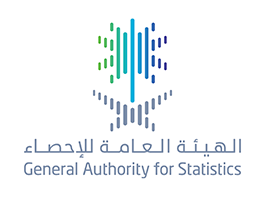
الهيئة العامة للإحصاء: انخفاض الرقم القياسي لتكلفة المعيشة لشهر أكتوبر 2017
On Tuesday the 3rd of Rabe’a first 1439H corresponding 21st of November 2017, the general authority for statistics (GaStat) has issued the cost of living index’ monthly report for the month of October. The report has been published on the official website of the authority www.stats.gov.sa , as the cost of living index has registered a decline by 0.2% in October 2107 compared to last month (September 2017).
The monthly report which was issued by GaStat clarified that the cost of living index in Saudi Arabia has recorded (137.5) in October 2017 which is a decline by 0.2% compared to September 2017 during which it recorded (137.8).
The report attributed this monthly decline of the indicator to the declines of the six main sections that compose the cost of living index which are: transportation section by (1.0%), House Furnishing, equipment, and maintenance section by (0.4%), food and beverages section by (0.3%), restaurants and hotels section by (0.2%), clothes and shoes section by (0.1%), and the sections of housing, water, electricity, gas, and the other kinds of fuel by (0.1%).
On the other hand, three main sections of the indicator have registered an increase which are: health section by (0.4%), culture and leisure section by (0.3%), and telecommunication section by (0.2%).
However, the sections of tobacco, education, commodity and services have not registered any worth mentioning change.

الهيئة العامة للإحصاء : المملكة تعزز من مكانتها الإحصائية على المستوى الدولي بعضوية فريق الخبراء الدوليين
As the First Country in the Middle East.. with the Aim of Working to Improve the Statistics of Tourism
The General Authority for Statistics (GaStat): The Kingdom is enhancing its statistical position at an international level with the membership of the international expert group
The Kingdom of Saudi Arabia enhanced its statistical position at an international level after the joining of GaStat and the Saudi Commission for Tourism & National Heritage to the membership of the international expert group that is concerned with the Tourism Satellite Account of 2017, to be the first country in the Middle East that has been nominated to accomplish the Tourism Satellite Account according to the World Tourism Organization (UNWTO) standards. UNWTO has also nominated the Kingdom of Saudi Arabia to execute the capacity building program. This initiative ensures an effective execution for information systems and tourism in all countries in the Middle East. Therefore, the Kingdom will represent these countries in managing the project, it is also considered as a mediator to transfer the knowledge and the experience of the organization to the Middle East countries. Moreover, the international experts group will work on preparing a guide to standardize and enhance the statistics of tourism and strengthen the support for the statistics within the United Nation system.
Additionally, the statistics committee and the Tourism Satellite Account will handle the coordination with international authorities and institutions to lead the statistics, set its standards within the United Nation system and support the member countries to enhance their national regulations for the tourism statistics and Tourism Satellite Account.
The president of GaStat Dr.Fahad Bin Sulaiman ALTekhaifi assured that the authority will work in partnership with the Saudi Commission for Tourism & National Heritage to maximize the benefit from this membership at all levels. He added that choosing two entities from the Kingdom of Saudi Arabia for membership of the international experts group, which is considered with the Tourism Satellite Account 2017, is an extension of the Kingdom's role in improving all the statistical fields and it shows what the statistical sector finds from the wise leadership (May God support them) for its unlimited support. In addition, it is also a result of joint efforts and integration between GaStat and the Saudi Commission for Tourism & National Heritage in the field of tourism statistics.
It is noteworthy to mention that the two authorities (Statistics and Tourism) have signed a memorandum of understanding in the field of information, statistics and the regulations of the governmental decision support. The signing was under the sponsorship of HRH the governor of Riyadh city, prince Faisal Bin Bandar Bin Abdulaziz AL-Saud, last March of this year within the events of the tourism investment and travel forum in Riyadh city.
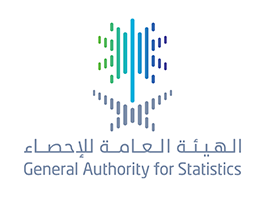
«الإحصاء السعودية» تقدم للشورى خطتها الاستراتيجية في التحول إلى هيئة مستقلة
Department of Statistics (formerly the General Authority for Statistics currently) members of the Committee of Economy and Energy Shura Council presented its strategic plan in the transition to an independent body, it came after a discussion of the Council's annual report to the Department of Statistics in the past general. Put some members of the Saudi Shura Council at their session yesterday, a number of views on the Department of Statistics report in the past year, comes at a time when the Department of Statistics turned into a public body for the census, a decision of the Council of Ministers about five weeks ago. In this regard, an informed source revealed «Middle East» yesterday that the General Administration of Statistics in Saudi Arabia will achieve its objectives through the provision of statistics and data and information and high-quality indicators, as all categories of beneficiaries of government agencies and enterprises and private individuals to various statistical areas (demographic, social, economic and environmental and cultural), so take advantage of them in the planning of development work. He said the same source, that the members of the Committee of Economy and Energy Shura Council, briefed on the strategic plan for the benefit of former public statistics, which will be applied in the transition to an independent body, where this plan is based on two major dimensions, namely: the beneficiary of the government agencies, private facilities, and members of service , in addition to high quality. The source said: «These two dimensions that contained five axes of development is the strategy based on the beneficiaries service, and statistical products and services of surveys and research, and methodology of statistical work and procedures, and the development of technical infrastructure for the development of statistical work, and the culture of the organization and capacity building, and restructuring and governance work». He pointed to the same source, to ensure that all the focus of a lot of projects and initiatives in accordance with the time schedule of expected Ontsem in a qualitative leap for statistical work in Saudi Arabia. , The Commission asked for the economy and energy Shura Council, during yesterday's session, the Department of Statistics to expedite the transition to Algiomkana Statistical System, to complete the basic structure of the Standard Rules Spatial Information National, and requiring all government agencies to provide information and data for the project automated link system information, on the bases technical and schedule required by the project. It also demanded the development of budgets for projects, statistical surveys and the transition to Algiomkana statistical system, in order to provide sufficient flexibility to spend it to be completed in the time required. During the session, Mohammed al-Mutairi student, information about the project to shift Algiomkana Statistical System, and hoped to provide this information to evaluate the project and support the necessary recommendations. He called Dr. Saeed Sheikh Department of Statistics to develop its website, providing information on the raw data, researchers can use the form and interested. While Dr. Mohammed Al Naji said during his speech that the Department of Statistics is still using an older scientific techniques, while Dr. Mansour Alkredes stressed the importance of a survey of the workforce in Saudi Arabia every three months, adding that the workforce have statistics of special importance require monitored on a quarterly Yearly dynamic response to changing realities. He suggested Dr. Abdullah Al-Harbi, establishment of a national data bank and information, and cooperation with the statistics departments at universities to build partnerships and specialized rehabilitation of the cadres of interest, and to cooperate with the Shura Council to find a center for public opinion polls and trends. Saudi Shura Council session saw yesterday, to approve the proposal to add two paragraphs fourth and fifth articles of the health system, introduced from Dr. Mona Al-Mushayt and decided Shura Council approval of some «model contract public construction» prepared in light of those amendments and recycled to the Shura Council for consideration in accordance with amendments introduced by the Government on a number of competitions and the government procurement system and project materials to article 17 of the system board. These developments come after an extraordinary economic steps, which decided the Saudi Council of Ministers about five weeks ago, converting Department of Statistics to the general body of the census, and in this regard, said the engineer will be launched after ninety days from the date of its publication in the Official Gazette », pointing out that the decision inception keen Adel Faqih, Saudi Minister of Economy and Planning said that «introduction of the new organization of the General Authority for Statistics wise leadership to support statistical track, and translates what looks to him and rulers of the quest towards the further development of service facilities, especially what has to do with the affairs of statistics, data and information, and that to cope with change and successive development in all economic fields, especially after the establishment of the Council of Economic Affairs and Development. He noted architect jurist as given to the Department of Statistics and Information before converted to body care cream and high-Care of the Custodian of the Two Holy Mosques, and the Crown Prince and Crown Crown, to play its role in the provision of statistical data which contribute to strengthening the country's economy and development in various fields. The Minister of Economy and Planning, Saudi Arabia, that the issuance of this decision was an extension of a lot of decisions, orders and directives of the High precious to support and enhance many of the sectors of government turning to independent bodies proved right those decisions and effectiveness in view of the data that touched and experienced Staff of those sectors and the beneficiaries of its services. He Engineer Faqih hoped to be in the issuance of this wise decision motivation and incentive to tender wealthy achieve what the new body to aspire in their plans and programs and keep pace with the size of the aspirations of the beneficiaries of their services, adding that «this organization, which consists of 28 articles provision in Article II that arise General body called the General Authority for Statistics and enjoy public legal personality and financial and administrative independence, and organizationally linked with the Minister of Economy and Planning ». And that the new regulation provides for the formation of the Governing Council of the Commission headed by the Minister of Economy and Planning, and the membership of the Chairman of the Authority, and a number of members who represent some of the relevant government agencies and a representative of the Council of Saudi Chambers, and two representatives of specialists work of the Commission. According to Faqih that the purpose of the establishment of the Authority is to organize and activate the statistical work in Saudi Arabia, through the preparation of a comprehensive, accurate and unified national statistical system and follow up on its implementation, and the development of plans and programs necessary to meet the statistical needs, service development plans, scientific research and various activities. The Minister of Economy and Planning of Saudi that the new organization stressed that «the General Administration of Statistics» responsible for statistics in Saudi Arabia, is the only official statistical reference for the implementation of statistical work system and technical supervisor and regulator to him, a jurisdiction that conducts surveys, as it is the research and studies and dissemination of the results of the different areas statistical, and it is in relation to the conditions of the community and its activities. Engineer jurist considered that the Council of Ministers to ensure that the decision of the Board of Directors shall review the general statistics of the state system, and suggest what would need to be in, and submit it according to regular procedures
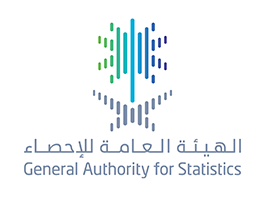
السعودية وكوريا الجنوبية توقعان مذكرة تفاهم في مجال الإحصاء
Within the joint committee meetings events on the occasion of completing 55 years in the capital city Seoul
Saudi Arabia and South Korea Signed a Memorandum of Understanding in the Field of Statistics
Saudi Arabia and South Korea signed on Friday 7th of Safar 1439 H (27th of October 2017) in Seoul the capital city of South Korea a memorandum of understanding (MOU) to cooperate in the field of statistics. It aims to establish a cooperation between the two countries in the field of statistics by exchanging administrative and technical experiences that are related to the work of official statistical entities. Moreover, the signing ceremony was held within the “Saudi-Korean” joint committee meetings events on the 26 and 27 of this October. These events were held in the capital city of Korea on the occasion of completing 55 years of relationship between The Kingdom and Korea. The memorandum was signed by his excellency the president of GaStat Dr.Fahad Bin Sulaiman AL-Tukhaifi from the Saudi side and by the official commissioner of the Korean statistics Mrs. Hwang Soo Kyeong from the Korean side. A number of the two countries officials have attended the ceremony. In addition, his excellency the president of GaStat Dr.Fahad Bin Sulaiman AL-Tukhaifi expressed in his speech for this occasion his thanks to the Korean side for the warm reception and gracious hospitality that the Saudi delegation had. He also assured on the deep cooperative relationship between the two countries since 55 years ago until now in a noticeable improvement. He said" we are here today and more than half century of relationship between our countries have passed where the relations have improved remarkably in different fields, in which the economic interests have gathered the experts of the two countries on the tables of the commercial cooperation. Additionally, the special political relationships between the two countries have attributed in the advancement towards cooperation fields that are more distinguished. Since the kingdom of Saudi Arabia and the Republic of Korea have agreed on establishing diplomatic relations at the ambassadorial level on 16th of October 1962 until this day, the two countries are keeping a strong cooperative relationship as partners and they represent a special model for the West-East convergence”. Dr.AL-Tukhifi added that signing the statistical memorandum between the two countries came along with the new Saudi Vision 2030 where it opens wider horizons for cooperation. The statistical partnership is a qualitative partnership to transfer successful experiences and effective cooperation in the fields of statistical data and information which is considered the strongest cornerstone towards future.
It is noteworthy to mention that the statistical memorandum between Saudi Arabia and south Korea includes points for cooperative work in developing technical mechanisms necessary for collecting and publishing statistics according to international standards, determining the fundamentals of statistical databases in different statistical fields, exchanging experiences concerning the necessary requirements for establishing an information central system that is linked automatically with all public entities [and their activation mechanisms], developing statistical work in governmental entities in addition to developing government statistical plans, policies, and mechanisms, exchanging statistical awareness programs and organizing joint seminars and workshops which discuss cooperation issues.
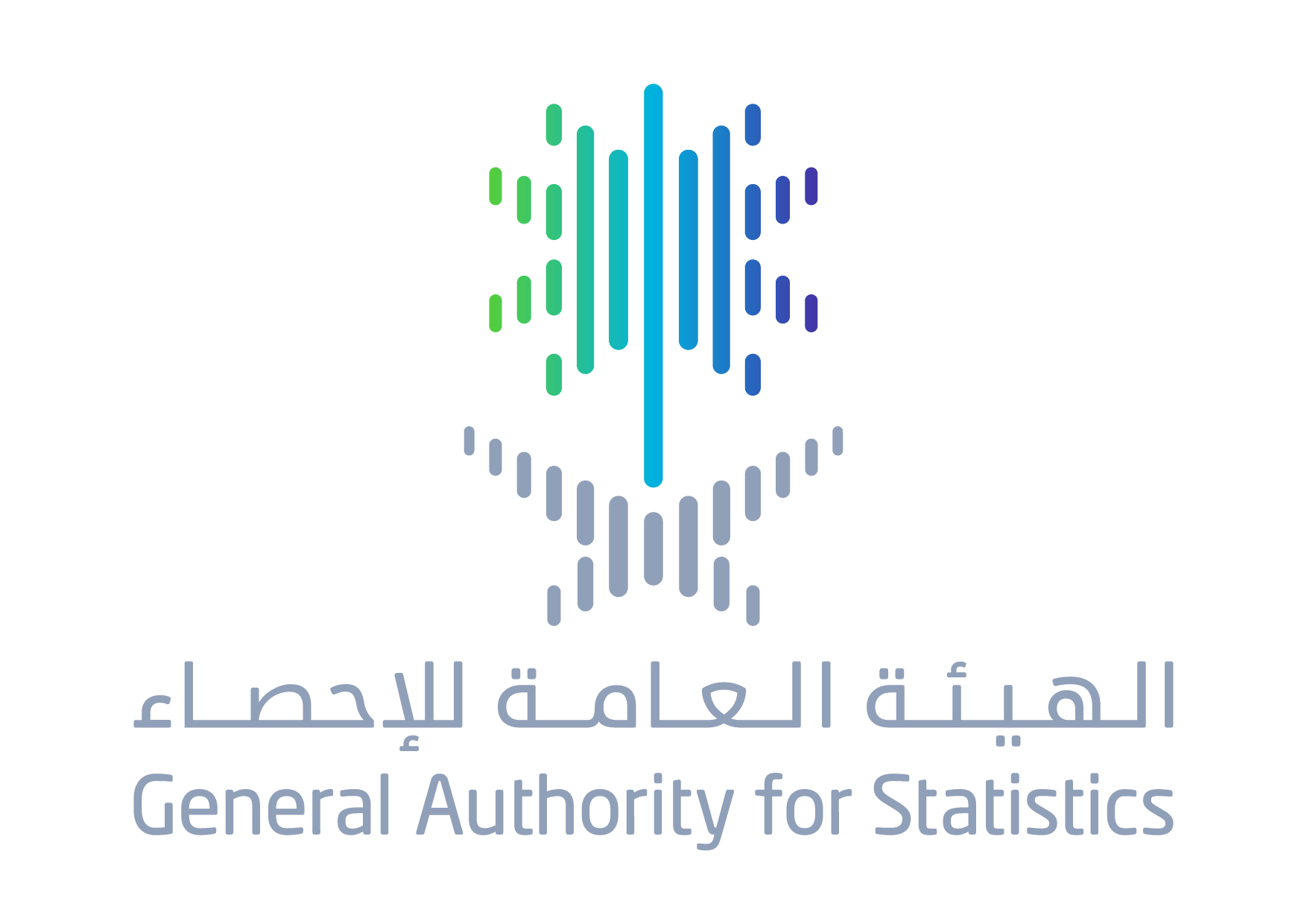
الهيئة العامة للإحصاء: انخفاض الرقم القياسي لأسعار العقار (6,3 %) مقارنة العام بالماضي و استقراره مقارنة بالربع الثاني
GaStat: Real Estate Index Decreased by (6.3%) compared to the previous year and stabilized compared to Second Quarter
On Tuesday Safar 4th, 1439 (October 24th,2017), GaStat issued its quarterly indicator of the real estate price general index in the Kingdom of Saudi Arabia for the third quarter (2017) and published it through its official website www.stats.gov.sa . This indicator is based on available registry data of the Ministry of Justice regarding real estate transactions. This indicator is an essential tool that supports entities which make economic and statistical decisions regarding the real estate price movements and future forecasts during different periods of time. The indicator includes three main sectors consisting of many real estate types: residential sector (piece of land, building, villa, apartment, and house), commercial sector (piece of land, building, shop, gallery and commercial centre), and agricultural sector which only includes agricultural land.
The index of real estate prices for the third quarter 2017 recorded a relative stability compared to the previous quarter (second quarter 2017), reaching (84.9) in the third quarter 2017.
The report attributed the stability of the real estate price index for the third quarter of 2017 to the varying percentage of change in the main sectors composing the indicator. The commercial sector witnessed a decline by (1.0%), the residential sector witnesses an increase by (0.2%), while the agricultural sector was stable without any relative change.
The indicator recorded a decline of (6.3%) compared to the same quarter of the previous year (third quarter 2017). The report attributed this decline to the decline in the main sectors composing the indicator: the residential sector (7.9%), the commercial sector (10.9%) and the agricultural sector (1.0%).
GaStat: The Saudi unemployment rate is 12.8% in the 2nd Quarter (2017)
Labor Market Bulletin Includes 67 Statistical indicators
GaStat: The Saudi unemployment rate is 12.8% in the 2nd Quarter (2017)
The General authority for Statistics (GaStat) published the Labor Market Bulletin for the second quarter of 2017 on Sunday Muharram 11th,1439H (Corresponding to October 1st,2017) which provides comprehensive data and indicators on the labor market in the Kingdom from April 1st to June 30th, 2017 (Corresponding to Rajab 15th to Shawwal 6th, 1438H) to support decision and policy makers regarding labor force. It also contributes in building a database on the labor market in the Kingdom that can be used to prepare and plan future social and economic development programs.
The quarterly bulletin includes 67 statistical indicators which contain data and indicators from the Labor Force Survey estimates and labor market data from the administrative records of the relevant entities (Ministry of Labor and Social Development, Ministry of Civil Service, General Organization for Social Insurance(GOSI), Human Resources Development Fund and National Information Center) applying international standards in this area.
The results of the bulletin for the second quarter of 2017 indicated that the total number of employees from the data of administrative records in the Kingdom of Saudi Arabia reached (13,841,158) individuals compared to (13,889,137) for the first quarter of 2017.
According to the results of the bulletin also from the data of administrative records in the government agencies for the second quarter of 2017, the total number of Saudis seeking work reached (1,075,933) individuals, (216,352) of them are males and (859,581) are females.
The results also showed that the highest percentage of Saudis seeking employment was among the age group (25-29), which is (34.2%). Also according to the results of the administrative records data, nearly half of the Saudi job seekers hold university degrees reaching (50.5%).
The results of the bulletin showed that the unemployment rate in Saudi Arabia for the Saudi population (15 years and over) from the Labor Force Survey estimates for the second quarter 2017 reached (12.8%), (7.4%) are males and (33.1%) are females. And the unemployment rate in the Kingdom for the total population (15 years and over) is (6.0%), (3.3%) are males and (22.9%) are females.
The results also showed that (11.6%) of the unemployed Saudis had previously worked, and (32.9%) of unemployed Saudis who had previously worked left their jobs due to dismissal from the employer. The survey results also showed that (9.6%) of unemployed Saudis have already been trained.
Regarding the economic activity rate of total population (15 years and over) it reached (54.2%), divided between males (78.2%) and females (18.7%). In its bulletin, GaStat also explained that the economic activity rate for total Saudi population (15 years and over) reached (40.3%).
The bulletin included a large number of detailed data on workers according to the regulations they are subject to, nationality, sex, age, administrative region and educational level, as well as data for job seekers, average monthly wages, working hours and domestic workers.
For more details, you can view the bulletin through Gastat’s official website: www.stats.gov.sa
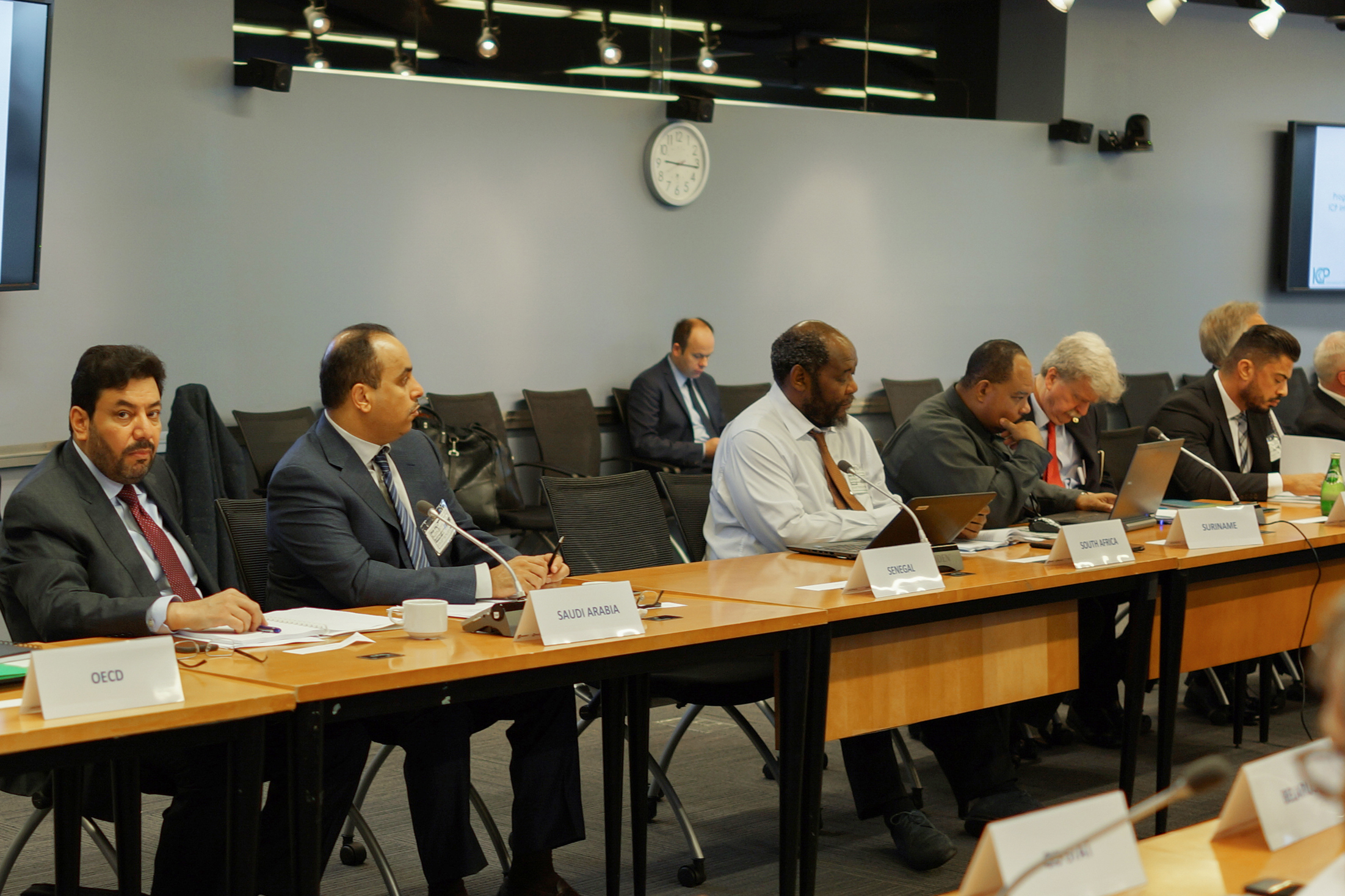
د. التخيفي : تميز المملكة العربية السعودية في الإحصاء قادها لعضوية المجلس والمشاركة في اجتماعاته الدورية
UN International Comparison Program board of directors holds second meeting
Dr. Altekhaifi: KSA's distinctive work at statistics leads to council membership and participation in recurring meetings
Saudi Arabia has participated at the second meeting of the board of directors of the International Comparison Program (ICP), which was held at Washington D.C. early this week. His Excellency, president of the General Authority for Statistics, Dr. Fahad bin Sulaiman Altekhaifi, confirmed that the program’s work and results will help shape policies for global comparison to support statistical products of the participating countries. It will also enable the General Authority for Statistics to access the best global practices for statistics for the purpose of improving and developing the statistical work. Also, it will raise the quality of the data, which will reflect positively on the decisions for development that rely mainly on statistics.
On the other hand, his excellency Dr. Altekhaifi pointed out that the board of directors, which has 11 countries including Saudi Arabia, which represents west Asia, has looked into the progress made when implementing the 2017 cycle in the participating areas. The council also specified a list of research topics including, implementing a rolling survey approach and building Purchasing Power Parity (PPP) time series, integrating ICP and Consumer Price Index (CPI) activities, Streamlining the process of establishing product lists and the use of importance indicators, improving the availability and quality of input data for rents, government services, and construction, streamline the use of productivity adjustments for government services, fine tuning global linking procedures, quality assurance of resulting PPPs and measures of reliability and other topics related to statistical work.
Dr. Altekhaifi added that the ICP selecting of Saudi Arabia for the membership at the 2017-2019 cycle came as a result of the positive role of the General Authority for Statistics in different statistical programs organized by the UN. It also confirmed the kingdom’s effective role on the global map of statistics. Moreover, it reflects the results of the strategic transformation of the kingdom’s Statistic sector, which the leadership cares for and supports due to its role in aiding the national development decisions. The ICP, which is under the supervision of the World Bank, is a partnership program for statistics on a global level. It is based on a statistical system that is connected with economic analysis. It uses statistical methods to derive the necessary data to calculate the PPP for about 200 countries and economies worldwide. It will facilitate the use of PPP as currency converters. That will allow for the comparison of the total economic indicators and the economic situations of countries worldwide.
It is noteworthy to mention that the ICP board of directors is compiled of executives, chairpersons, and leading experts in 11 statistical devices participating in the program. They are distributed according to the regional areas: Africa, Asia, Pacific Islands, Latin America, the Caribbean, West Asia, Commonwealth of Independence States, European Union, non-European Union States, members of the organization for Economic Cooperation and Development, representatives of the International Monetary Fund, World Bank, UN Statistics Division, and the Inter-Agency Coordination Group.
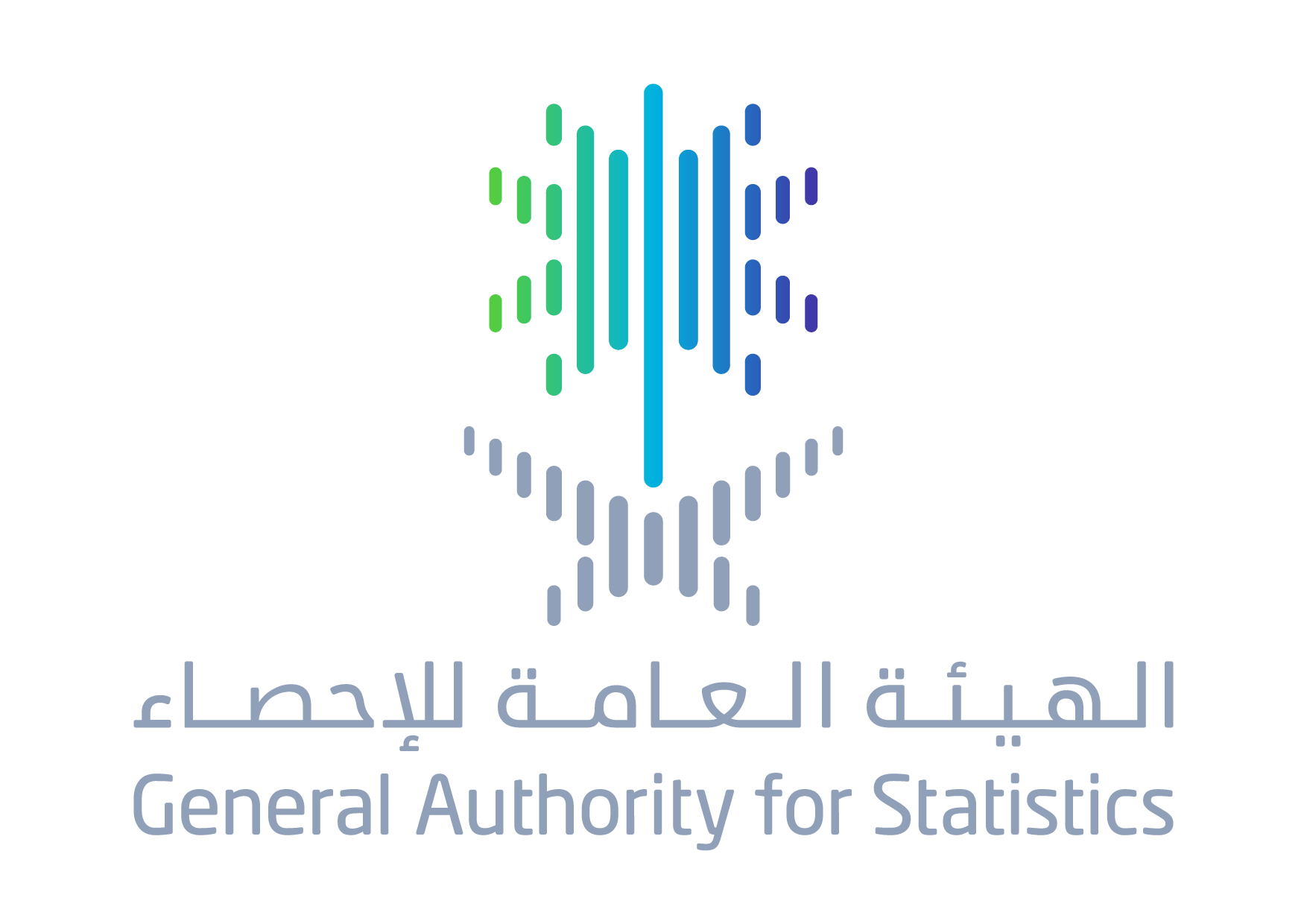
الهيئة العامة للإحصاء : ارتفاع الرقم القياسي لأسعار الجملة لشهر سبتمبر
GaStat: Wholesale Price Index Increases in September
On Tuesday, the 24th of Muharram 1438 H/ 25th of October 2016 AD, the General Authority for Statistics (GaStat) issued the monthly indicator of Saudi wholesale price index for the month of September. It is now published on its website www.stats.gov.sa . The indicator recorded (163.1) with 0.3% increase in September 2016, compared to last month (August) in which it recorded (162.6).The indicator includes ten main sections; Food and living animals section, beverages and tobacco section, raw materials except fuel, mineral fuel and related products section, Fats and oils section, chemical materials and related products, manufactured commodities classified by material section, transportation equipment and machines section, diverse manufactured commodities section, and other commodities section.The report attributed that increase to the rise of three main sections that constitute this indicator; transportation equipment and machines section with (0.9), Food and living animals section with (0.6%), manufactured commodities classified by material section with (0.1%).On the other hand, six sections have decreased: raw materials except fuel section with (1.4%), diverse manufactured commodities section with (0.4%), beverages and tobacco section with (0.3%), Fats and oils section with (0.3%), chemical materials and related products with (0.1%), other commodities with (0.1%), However, the sections of mineral fuel and related products did not change and remained stable.The authority indicated that the Saudi wholesale index measures the average of change in the prices of commodities and services that are sold in the primary markets. What matters here is the price change only. Therefore, the changes that result from the differences in quality, quantity, shipping method, or any other influencing factor in order to get the net price are excluded. This index is provided to everyone, and conducted all over Saudi Arabia.It is worth mentioning that the wholesale price index is used to record any change in the prices of local or imported commodities. In addition to monitoring the price directions and the status of markets and costs of living. Furthermore, it is used in preparing the national accounts by protecting the income and national aggregates from the influence of price change.
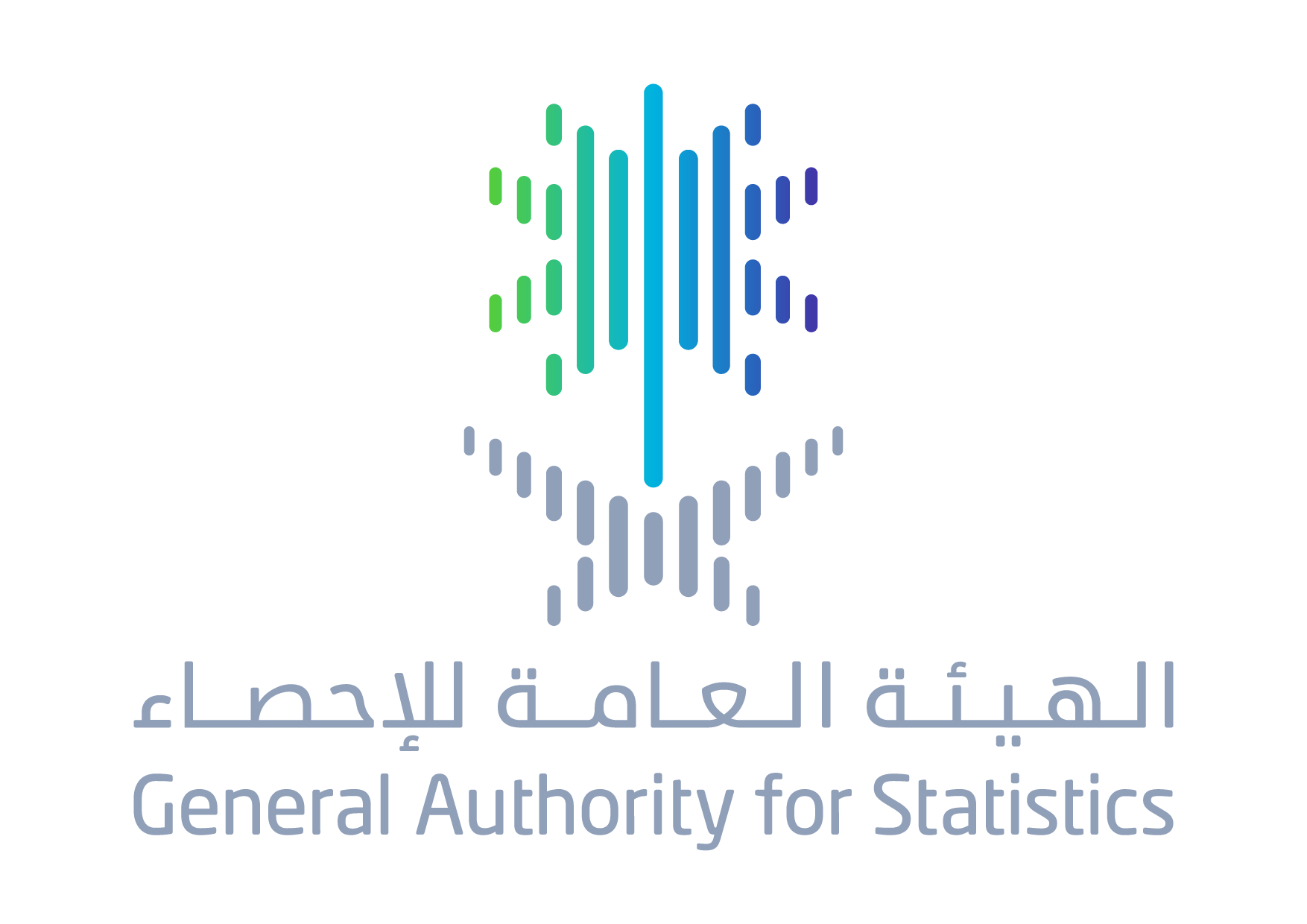
" الإحصاء “: استقرار مؤشر الرقم القياسي لتكلفة المعيشة لشهر سبتمبر الماضي
(6) sections decreased, and (4) rose.
"GaStat" : Cost of Living Index remains stable in September 2016
On Monday, the 23th of Muharram 1438 H/ 24th of October 2016 AD, the General Authority for Statistics (GaStat) issued the monthly indicator of Saudi cost of living index for the month of September. It is now published on its website www.stats.gov.sa .The indicator didn't record any relative change compared to the previous month.The monthly report indicates that the Saudi cost of living index indicator recorded (137.9) in September 2016 without any relative change compared to August 2016. It recorded an increase above (133.9) from September 2015, recording a rise of 3.0% on an annual basis.The report attributed the monthly increase to the rises of four of the main sections that constitute this indicator; clothes and shoes section with (0,7%), food and beverages with (0.3%), telecommunication section with an increase of (0.2%) , and finally, furniture ,appliances, and maintenance with an increases of (0.1%).On the other hand, six sections have decreased; commodities and services with a decrease of (1.0%), restaurants and hotels with a decrease of (0,7%), literacy and recreation with (0.4%), transportation with a decrease of (0,2%), housing, water, electricity, gas, and other types of fuels with a decrease of (0.2%), finally, health section with (0.1%).However, the sections of tobacco and education did not change and remained stable.The cost of living index indicator issued monthly by GaStat aims at providing data about the prices of commodities and services that are in the consumer basket. It also aims at providing data about the cost of living indices within a time series. (The consumer basket) refers to the actual group of commodities and services that are recorded during the household expenditure and income survey. The relative distribution of the commodities and services consumption inside the consumer basket is extracted to make it the base stone in the process of indices calculation. The cost of living indices are used to measure any change in the prices of commodities and services that are purchased by consumer. Moreover, it is used as an accurate indicator that measures the economic inflation and recession. It is also used in statistical and economic analyses that are associated with prices movement and anticipations in different times. Data are collected by conducting interviews. The sources addresses are clarified to the interviewers to facilitate their task. The sources distribution in one city must cover all available commodities and services with all levels.
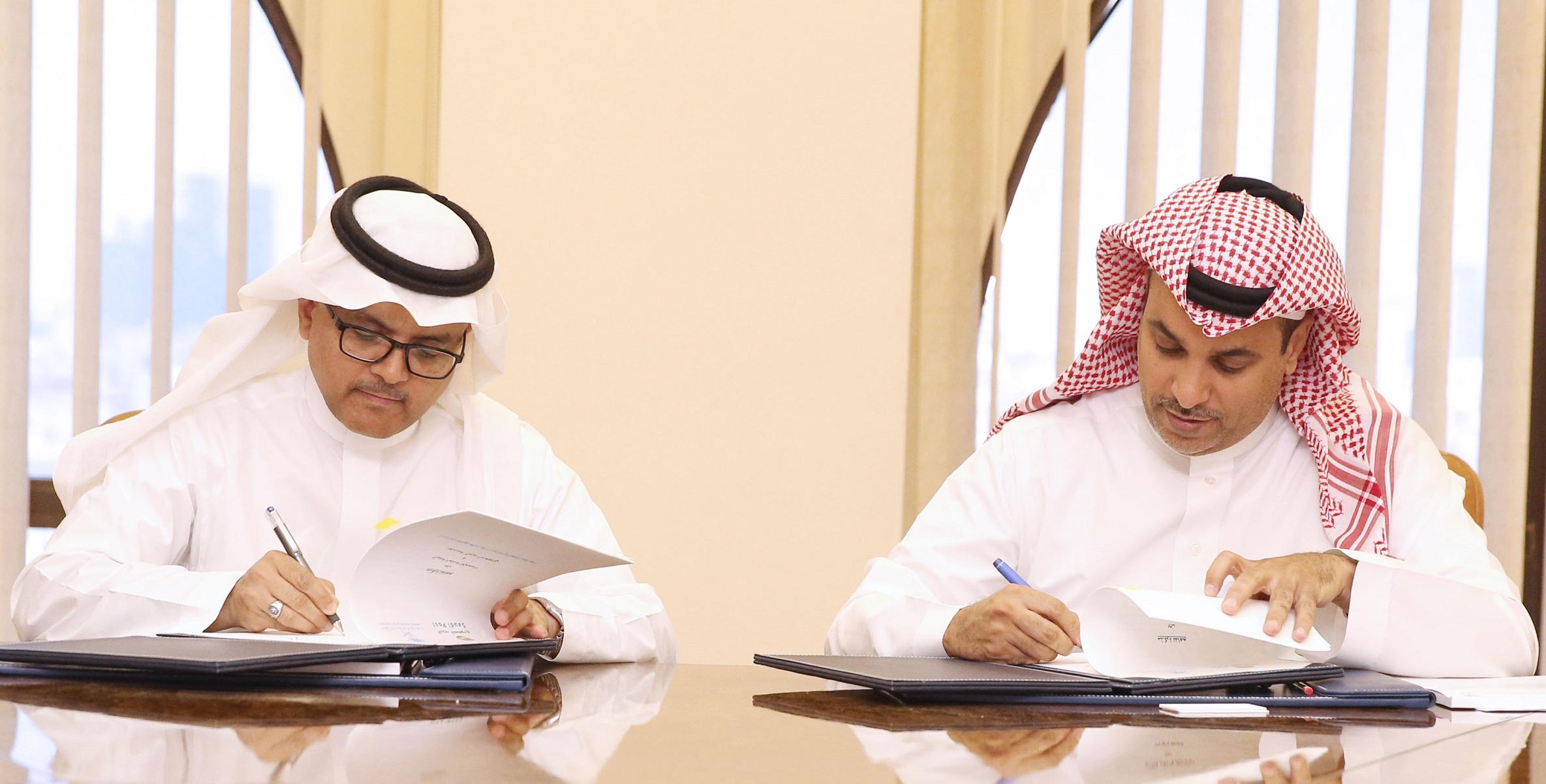
" العنوان الوطني " يربط البيانات بالموقع لرفع جودتها ويؤسس مرجع مكاني موحد للإحصاءات
GaStat and Saudi Post Institutions Sign a Memorandum
" National Address" Links Data with the Website to Raise Its Quality, and Establishes a Statistics Unified Spatial Reference
GaStat starts using the national address map, which is verified by Saudi post institution, to be the base of the statistical data collection operations. It also links the data of national address in the statistical field operations. On Sunday, 22 of Muharram 1438 H, GaStat and Saudi post institution signed a memorandum to enhance the collaboration between the two entities and activate the use of national address as a geographical base of data and statistics in Saudi Arabia, so that it can be used in the 2020 population and housing census.
Dr. Fahad bin Sulaiman Al-Tukhaifi, president of the General Authority for Statistics, said that the collaboration with Saudi post institution is all about producing and using the geospatial data and link them with the statistical data through surveys and administrative records conducted periodically and regularly by GaStat. The main objective is achieving integration between them to provide high quality statistical products that collaborate in supporting policy and decision makers. He added, unifying the efforts between the authority and the institution in the fields of geographical and spatial data collaborates in unifying the data sources by an updated, certified, and unified Saudi map. In its coming field works either for households or establishments, GaStat will provide statistical data and links them with the national address geographically, so that they can collaborate in providing high quality data in all fields. Dr. fahad clarified that this cooperation includes publishing the statistical data in a way of geographical distributions by using the national address map, and setting unified technical principals between the two entities when dealing with data and raising the statistical awareness.
On the other hand, Dr. Osamah bin Mohammed bin Saleh Altaf, Saudi post institution acting president, indicated that the Saudi post is working on the collaboration with GaStat within the Saudi post institution strategy which shows the Saudi post capabilities in the field of geospatial information and national address for all entities, in addition to providing the statistical data and link them geographically with the unified national address.
Dr. Altaf asserted that this agreement is one of the important agreements that the Saudi post made. It is considered a crucial addition in the field of accurate national statistics publishing through the national address digital maps which use the most recent international techniques.
He added, the Saudi post wants to exchange its experience and provide its services after building a national organization of the standard addresses of every Saudi location and building by using the most recent techniques, geographical information systems, and addresses standards and principals. He stressed on the importance of using the national addresses as they are considered a base infrastructure that all government electronic services and commerce rely on, so that citizens and foreigners all over Saudi Arabia get benefited from its programs.
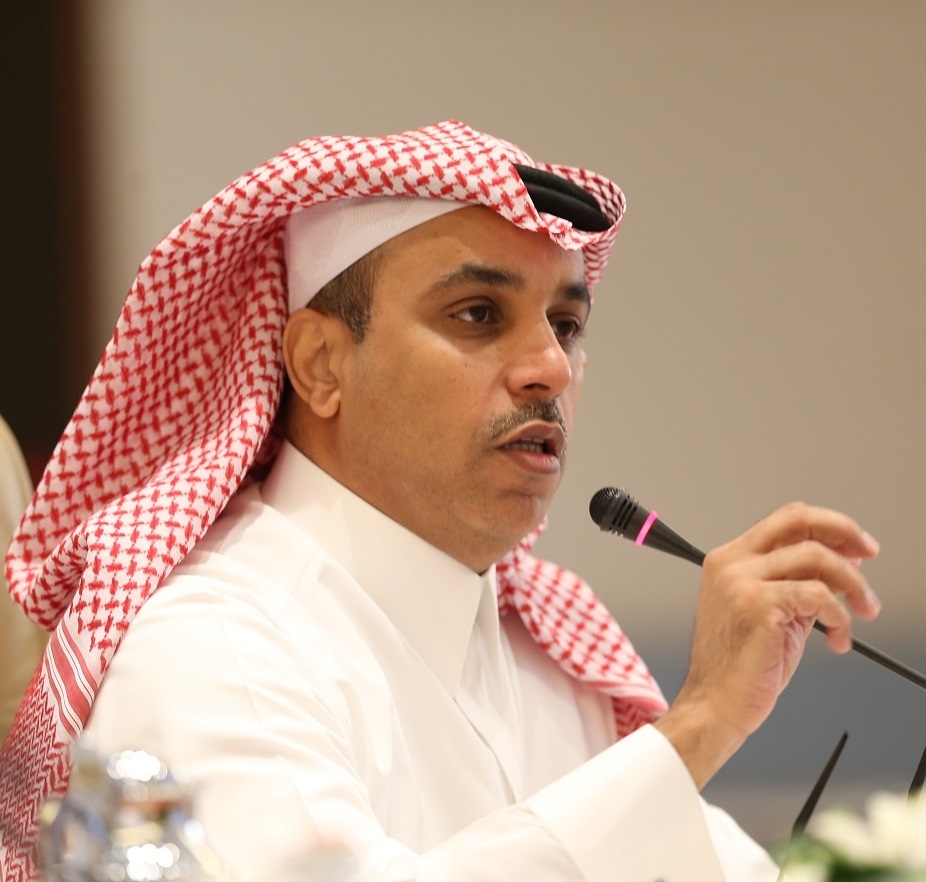
الهيئة العامة للإحصاء تبدأ العمل بالهيكلة الجديدة
New (Statistical, Creative, and Awareness) Departments to Cope with the Requirements of the New Saudi Vision and National Transformation
GaStat Starts Working with the New Structure
The General Authority for Statistics starts working with the new organizational structure. A general administration for natural resources and knowledge statistics has been created. It works beside the general administration of economic statistics, the general administration of social statistics, field statistics departments, methodologies departments, creativity departments, and awareness departments.
GaStat president, Dr. Fahad bin Sulaiman Al-Tukhaifi said that working with this new organizational structure is a response to the 2030 Saudi vision and 2020 national transformation program. The next phase needs integrated efforts from the statistical sector, so the sector must work in a distinct way as it is the only official sector that is responsible for the production of data, information, and statistics, which reflect the developments in Saudi Arabia.
Dr. Fahad clarified that the new structure, which has been authorized since the first day of this Muhharam, is a way that guarantees achieving the authority's strategic goals that are represented in enhancing the efficiency and quality of statistical services and products. Moreover, it makes these services more comprehensive and beneficial. It also helps to raise the satisfaction level of all clients and beneficiaries, gives the authority a positive reputation in the society, promotes the statistical sector level, and builds a strong authority.
Al-Tukhaifi added that this new structure is based on the statistical development' national strategy aspects, covering five aspects that guarantee the efficiency of the statistical sector in Saudi Arabia. The first aspect is using the statistical data and information, which aims at improving the use of statistical data and information in Saudi Arabia. This would fulfill all the users' needs by providing easy and on time statistical data and information. There is also the aspect of statistical data and information production, which aims at enhancing the field operations such as censuses, surveys, and researches. Furthermore, it enhances using the most recent standards and classifications in collecting, analyzing, and publishing data. The third aspect is the recent technologies. It aims at using the most recent technologies in all the phases of the statistical and administrative work. It provides a high quality IT infrastructure. The fourth aspect is the communication and awareness, which aims at enhancing the statistical knowledge in society through education and awareness. It introduces those who work in the statistical sector with the concept of communication. The fifth aspect is about governance. Through this aspect, the authority is trying to set the principals that govern the statistical sector. This enhance the idea of "results based management" . It continuously develops the human resources and tries to recruit people with high capabilities.
As for the main components of the authority new structure, Dr.Fahad stated that the organizational structure has been made by a teamwork from the authority and some experts outside the authority. This structure was made to develop and improve the statistical work. It also positively collaborate in activating the strategic transformation through which the Saudi statistical work is going. It enhances the role of the entity that supervises and organizes the statistical work by transforming it into an independent authority that has a featured personality and administrative and financial independence. The teamwork worked on determining the tasks, duties, and regulations according to certified instructions that guarantee founding an effective and comprehensive statistical organization. This new organization focused more on the clients and raising the products quality, considering them the main dimensions of work. The new statistical organization has been built in a way that prevent duality in work and responsibilities. It also intends to make the organizational structure compatible with the authority’s strategy by collecting the harmonized activities in one sectors and administrative units to implement unified tasks. In this structure, Many administrations and departments have been founded to achieve the strategic goals.
Regarding the main components of the new organizational structure, the authority president revealed that the statistical and administrative work has been distributed among three main sectors headed by the vice presidents. These sectors include the statistical works sector, which contains general administrations of economic statistics, social statistics, and natural resources and knowledge statistics (new one). In addition to the independency of the statistical field works with a general administration of operations. There is also an administration specialized in methodologies.
As for the second sector, the statistical creativity and customer service sector, it is a totally new sector. However, the third sector represents IT and supporting services, as they are the main infrastructure of the authority’s statistical and administrative work. Moreover, the new structure includes a general administration of media and statistical awareness, which manages all the internal and external activities aiming at raising statistical awareness. It also includes a general administration of projects and strategic planning which implements and prepares the authority’s strategies and plans. Furthermore, there is a general administration of support and institutional excellence that manage, prepare, and update all the policies, operations, and procedures. The later also supervises the programs of total quality department and knowledge department.
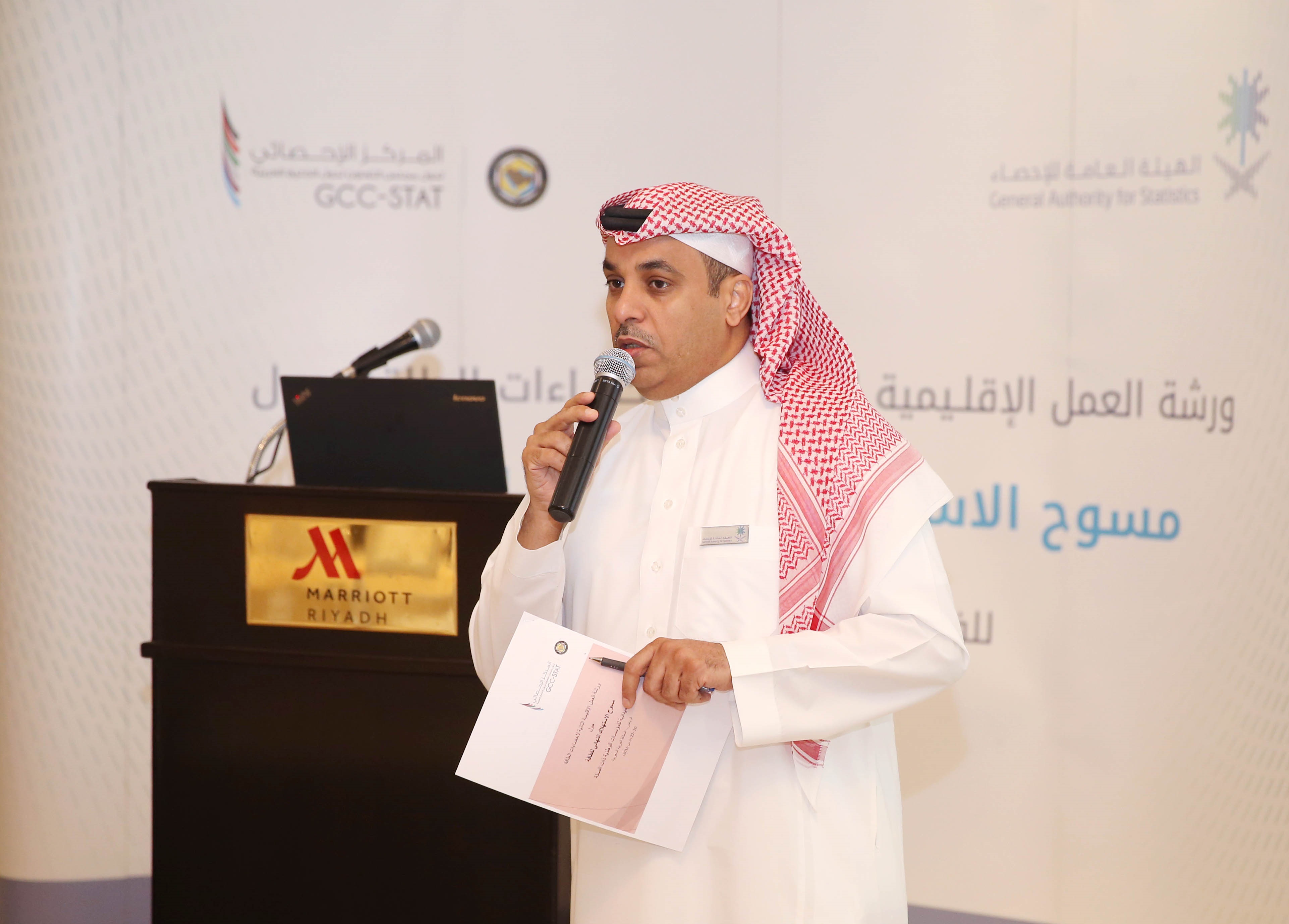
د. التخيفي: نهدف إلى توحيد معايير منتجي البيانات لخدمة مواطني " الخليج "
GCC "Energy Statistics" in Riyadh
Dr. Altekhaifi: We aim to unify Data producers' Standards to Serve "GCC" Citizens
Media center- Riyadh
The Chairman of the GCC Statistical center, the Chairman of the General Authority for Statistics in the Kingdom of Saudi Arabia, Dr. Fahad Sulaiman Altekhaifi expressed his thanks and gratitude towards the leaders of the GCC countries for supporting all programs and activities of the "GCC Statistical centre", as a result of their role in supporting all decisions related to the development of GCC nations. Dr. Altekhaifi asserted that the results of the Energy Statistics' Second Regional workshop about the final consumption of energy surveys held in Riyadh city meet the needs of the national and regional policy makers of the energy sector. It will also support everything that would develop the energy sector in GCC countries. Dr. Altekhaifi also added that through this workshop, the GCC statistical centre seeks to strengthen the cooperation between energy statistics producers, and unify the efforts in the used technical standards. In addition, it seeks to implement International standards by all data producers in member countries.
Dr. Altekhaifi revealed that the most important role of data producers in this meeting is to reinforce the understanding of the international standards related to energy statistics in the statistics system. In addition, it aims to explain the links between energy data groups and discuss the user's needs by enhancing the data and its publishing. Moreover, it aims to unify the efforts to raise the awareness about the methodologies needed in preparing energy statistic in the region. Furthermore, it aims to deepen the participants' understanding of international standards that support energy statistics. Also it clarifies the importance of the final consumption surveys' system.
In this workshop the participants reviews the national experiences of the member countries and the importance of the energy final consumption surveys. In addition, the participants visits several energy sector related entities in the kingdom of Saudi Arabia. This workshop continues until 22 March, 2016.
It is worth mentioning that The GCC Statistical Centre was established in June 2011 to provide a common official pool of statistics and data for the member states of the GCC. It was also established to support the statistical work of national statistical centers and planning entities in GCC countries.. The Charter was officially endorsed in December 2012 by the GCC Supreme Council (comprised of heads of member states: United Arab Emirates, Kingdom of Bahrain, Kingdom of Saudi Arabia, Sultanate of Oman, State of Qatar and State of Kuwait).
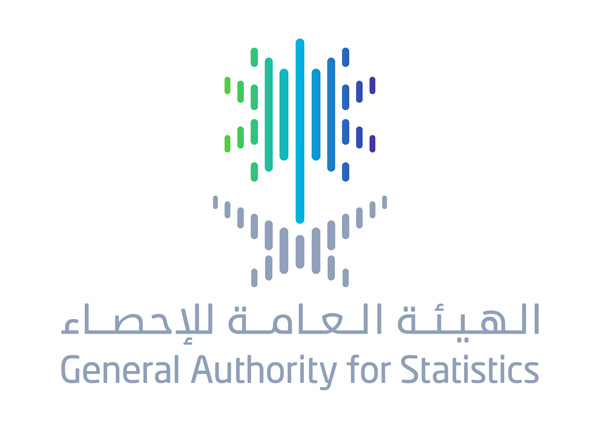
" الإحصاء " : دقَّة المعلومات التي يُقدِمُها المواطن ركيزة أساسية لقرارات ومشاريع حكومية
Updating the general framework of population and housing paves the way for a new labor force survey
"statistics" the accurate information provided by citizens is essential for governmental resolutions and projects
Media center- Riyadh
Supporting the resolutions of nationalization and reduction of "unemployment", the General Authority for Statistics ( GaStat ) stresses the importance of information accuracy provided by citizens in the activities of labor force surveys as these information are essential for the development resolutions and can determine many national programs and projects.
During his participation in the first Saudi conference for job creation held in Riyadh, GaStat chairman, dr. Fahad Altukhaifi stated that the citizen is considered the base for development building , that is through the information that he/she provides during the process of conducting surveys done by GaStat crew.
As for the survey of labor force, dr. Fahad confirmed that it is one of the most important household surveys conducted by GaStat . it provides fundamental data about the labor force and its characteristics, which helps in setting the plans to develop the labor market in Saudi Arabia, analyzing and evaluating the economic policies, and helping the decision makers in setting the labor market policies with all the related issues such as unemployment and training. The labor force survey results are very important too as they collaborate in building a data base for the Saudi labor market in order to cope with the interest and anticipations of the labor force statistics nationally, regionally, and internationally. The results also support all tendencies and efforts exerted by the public and private sectors in the process of nationalization. Moreover, they give an opportunity to collaborate in building a base for these information that can be beneficial in preparing and planning the future economic and social development programs. The authority conducts this survey every six months , it intends to conduct it every three months in 2016 according to the latest international standards and methodologies.
The authority chairman added that providing detailed data about the national and non-national labor force ,classified by their economic, social, and demographic characteristics, is one of the main objectives of the survey, in addition to its role in measuring the averages of economic collaboration, economic support, and employment and unemployment by many variables. It should also provide data about some training programs for job seekers, and be familiar with the vocational structure and the economic activity of employed people by a number of variables and the average of their salaries.
Dr. Altukhaifi thanked all governmental entities who work with GaStat . he assured that the authority is working with all governmental entities which are related to the Saudi labor market ( ministry of labor, human resources development fund, general organization for social insurance, ministry of civil services, and the national information center in the ministry of interior) in order to develop the survey on one hand and benefit from its results on the other hand. The authority is working with them also to unify the efforts so that they can get accurate data of the most important indicators in the Saudi labor market.
It is worth mentioning that the labor force survey results depend on the data and information of (33.500) households, distributed among all Saudi administrative regions, as a sample that represents the society. The households are chosen according to international and scientific fundamentals applicable in the population and housing censuses all over the world . GaStat has started preparing for the next survey after updating the general framework of population and housing which depends on the 1431 framework as it is considered the main source from which samples are collected to conduct future researches.
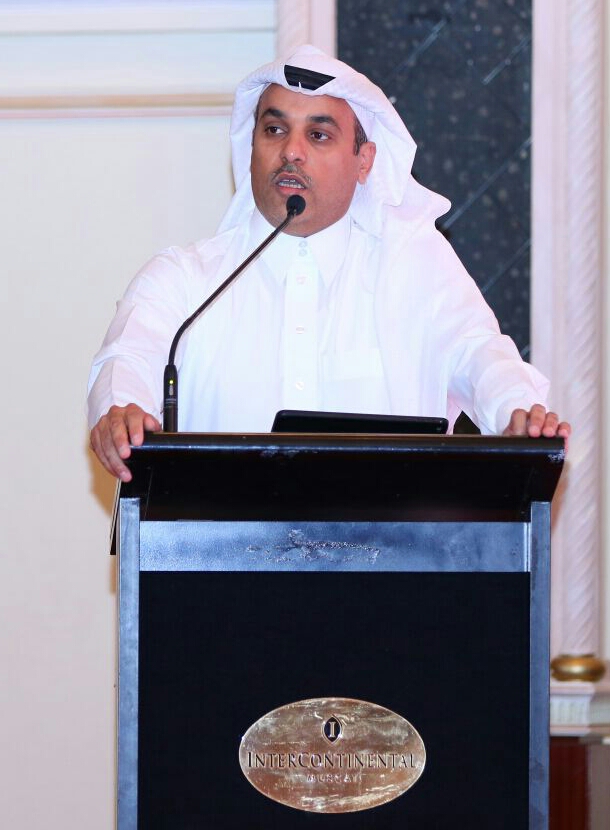
د. التخيفي : الإحصاء يدعم قرارات من شأنها الحد من ظاهرة ارتفاع الأسعار
The GCC Statistical Centre Launches the General Consumer Prices Index
In pursuit of the Gulf Cooperation Council (GCC) countries to find a number of coordinating and corrective procedural policies that will help in reducing the phenomenon of rising prices in the GCC countries, the GCC Statistical Centre launched the project of "GCC Consumer prices index", and "the statistical centre data portal" in Muscat, Oman, under the auspices of His Excellency Sheikh Khalid Almarhoon, the Minister of Civil services in Oman.
The chairman of the General Authority for statistics in Saudi Arabia, the chairman of the GCC Statistical center in its current cycle, Dr. Fahad bin Sulaiman Altekhaifi, asserted that the index number is considered to be an important tool to support decision makers in all private and public sector entities in GCC countries to prepare coordinating and corrective procedural policies that contributes in reducing the phenomenon of rising prices in the GCC countries. It is also considered to be an economic phenomenon with social dimensions. In addition, the new indicator will provide a unified prices statics data base with all its details, which will help the beneficiaries to use the information in various related fields.
Talking about the statistical centre data portal, Dr. Altekhaifi added that the goal of inaugurating the portal is to enable the observation of statistical data and documenting achieved advancements in the indicators of the GCC countries in different economic, social, and energy sectors. In addition, its goal is to provide information services that contributes in raising statistical awareness.
On the other hand, in the speech of Dr. Altekhaifi, he asserted on developing and supporting the statistical and institutional abilities, to keep pace with the statistical requirements on the GCC countries' level and internationally. He also asserted that this is one of the most important common goals on the strategic level of the GCC countries. He also added that the authorities and Gulf statistical centers are seeking to continuously reinforce and enhance the quality and quantity of statistical services, and develop, expand and market the statistical publishing. Also, it seeks to show the GCC countries' region as a unified social and economic region through unifying the national statistical strategies in the GCC countries with the combined statistical programs needs according to the best international practices. Altekhaifi also explained that everyone is working on building statistical culture and raising statistical awareness, in addition to reinforcing the actual and correct use of statistical data and information in decision making and policy making in GCC countries.
Altekhaifi also revealed about ten of the most important projects that are considered to be the top statistical priority determined by the GCC statistical centre, which are: the national accounts, environment and energy, financial executive statistics, balance of payments, development, progress and sustainability indicators, short term prices and indicators, unified registered population census (year of 2020), foreign trade, administrative data, job market, and the statistical standards, categories, methodologies, and data quality.
It is worth mentioning that the GCC statistical centre was established in September 2011, and its organization was approved in 2012 by the supreme council of the GCC to be the official source of statistical information and data related to GCC countries. It was also established to reinforce statistical and informational work of the national statistical centers and planning in GCC.
وزير الاقتصاد يُدشن عمل الهيئة العامة للإحصاء وبوابتها الإلكترونية...هيئة الإحصاء توقع 4 اتفاقيات مع جهات حكومية وخاصة
Minister of economy launches the general authority for statistics and its electronic portal
The authority of statistics signs 4 agreements with private and public sectors
Media center- Riyadh
Minister of economy and planning, chairman of the general authority for statistics, Eng. Adel bin Mohammed Faqeeh, launched the first day of working in the statistical field with a new structure and identity. This was an implementation of the supreme decree issued on 26-12-1536 H which states transforming the central department of statistics to be a general authority called ( the general authority for statistics). The authority is financially and administratively independent. In his speech that was declared in the launching event which was held in Marriot hotel, the minister expressed his gratitude and thanks to the custodian of the two holly mosques, king Salman bin Abdulaziz Alsaud, may God protect him, for his approval to transform the central department of statistics to be an independent authority. He confirmed that the work will start officially in the general authority for statistics as a result of many supreme directives, orders, and resolutions that support and enhance a lot of governmental sectors by transforming them into independent authorities that provide services compatible with the rapid changes and developments.
On his part, the authority's general director, dr. Fahad bin Sulaiman Altukhaifi, in his name and on behalf of all the staff of the central department of statistics , and all those who work in the statistical sector , he expressed his gratitude and thanks to the custodian of the two holy mosques for his supreme approval to transform the central department of statistics to a general authority. Dr.Fahad said that this transformation process has been done through six fundamental tracks which can be briefed in a working strategy that is all about the authority’s clients and partners to fulfill the actual need of statistical products, then developing these products and services and improving statistical and data methodologies and procedures. In addition, it focuses on upgrading the level of information technologies and digital infrastructure in order to give the products the ability to start from a very tough base that can cope with all technological changes. It also concentrate on raising awareness and literacy in the statistical field, and finally structuring the authority’s different tasks and departments. He assured that the general authority for statistics’ role has become more important as long as there are national transformation projects as it is very crucial to provide accurate statistical data and effective indicators besides developing the measurement tools.
On the first working day and after the transformation process, the authority’s general director has announced that the first of Muharram of the next year will be the day in which the information bank will be issued. This bank is one of the statistical development national strategy’ aspects, which aim to organize statistical data and information in Saudi Arabia, to guarantee providing the governmental sectors and individuals with statistical information and indicators through an easy and accurate technique. This is to support the development decisions via collaborative system, which starts with electronic linking between all data resources in many related sectors. Furthermore, minister of economy and planning Eng. Adel bin Mohammed Faqeeh has launched the electronic portal of the general authority for statistics. In this portal, the users can get all the needed information in very easy and direct ways through many windows and according to the international statistical and technical standards. On the first working day, four agreements have been signed with different private and public sectors. The authority has signed two agreements with the national information center in the interior ministry and e-government program (yesser). These agreements have been signed to develop the techniques of collecting, exchanging, and integrating data. The third agreement has been signed with the national center for communication, aiming to develop the mechanisms of communication with disabled people. It also aims to provide statistical content in sign language. On the other hand, the central department of statistics and information ex-directors and retired employees were honored.
After the launching event, the authority held an introducing workshop with many partners from both the private and public sectors. This workshop aimed to introduce the authority and its roles. The participants watched a detailed presentation about the products and services in addition to the interactive statistics window and a brief of the statistical awareness. The minister of economy and planning revealed that the statistical sector partnership with the private and public sectors will open many opportunities for the statistical sector to be constantly developed and improved in order to be able to effectively collaborate in supporting any developmental decision taken by any private or public sector in all fields of national development. It is worth mentioning that the ministers’ council resolution issued on 13/1/1437 H included the approval of general authority for statistics structure, and made it the only authorized entity that technically and structurally supervise the statistics sector. It also made it the only responsible authority for creating thorough national statistical databases in different fields. Moreover, it made it the only responsible entity for managing the authority affairs and creating its own board of directors

ستة مسارات عملتْ عليها "الإحصاء" خلال 90 يوم.. أربعة أيام ويبدأ القطاع الإحصائي نقلته الجديدة
"Statistics" worked on six tracks in 90 days
Four Days and the Statistical Sector will Start a New Era
Media Center
The Saudi statistical data and information sector is starting a new era after declaring the changing of the central department of statistics to be an authority named" the general authority for statistics". This transforming will start officially on Wednesday 1st of jamad first.
Director of media and statistical awareness department and the spokesman of the authority, Taiseer Almufarij states that working under the umbrella of the general authority for statistics is considered an implementation of the supreme decree number ( 64283) in 26/12/1436 H which declares transforming the central department of statistics to be a general authority called the general authority for statistics. This authority is financially and administratively independent. The supreme decree gave ninety days for the transforming process. The countdown is about to finish now and this Wednesday will be the first official day to work under the new name. Almufarij confirmed that this transforming is not only about changing the name or identity, but changing content, techniques, and mechanisms as the statistical sector must cope with all the rapid changes around it otherwise it cannot go farther. With the increase of commercial transactions, international investments, social and economic changes, mass data revolution , and the development of digital media and portable technologies, it has been a need for the statistical work to go through a vital transforming process in order to satisfy the clients and fulfill their needs which require the authority to establish a mutual partnerships, estimate their current and future needs, unify the information sources, facilitate access to this sources, and provide more advanced statistical products.
Almufarij said that the general authority for statistics is undergoing a transforming plan that has six major tracks: concentration on the client strategy, developing products and services, enhancing methodologies and procedures, upgrading information technologies and infrastructure, statistical literacy and building competences, and structuring all the authority's different tasks and departments in order to keep developing the authority and making it a distinct institution.
It is worth mentioning that the Saudi statistical work has started in a very early era of the Saudi development history. It has started in 1349H /1930 AD and continued for thirty years till the issuance of the general statistics system in royal decree number (23) which made the statistical work a sector that refers technically and administratively back to an official system that cooperated in organizing the statistical sector by setting the rules of relation between the central department as it is the only central department for statistics and the other sectors. This system aimed to activate the statistical work and make it more comprehensive, and raise statistical awareness. During the last fifty eight years, the department worked on many surveys, censuses, and indicators in many different fields in Saudi Arabia.

د. التخيفي : كلمة الملك سلمان رسمتْ خطوط الإدارة الجديدة للتنمية

مدير المصلحة: تحويل الاحصاءات الى هيئة يصنع شراكات فاعلة
GaStat Launches the “Statistical Calendar” for 1438H Hajj Season
More than 450 Statisticians Started this morning
GaStat Launches the “Statistical Calendar” for 1438H Hajj Season
Through its official website www.stats.gov.sa, the General Authority for statistics (GaStat) launched the statistical calendar for the 1438H Hajj season. It shows the publishing dates of services provided by the Kingdom to pilgrims, in addition to the statistics of domestic and international pilgrims.
GaStat official spokesman, Mr. Taiseer Almofarrej, explained that the statistical calendar with its content, from statistics and numbers, aims to show the efforts made to pilgrims from more than 45 public and private entities. On the second day of the current month of Dhu al-Hijjah, the statistics of services provided to pilgrims from health and medical services, public services, transportation sector services and telecommunication services will be announced respectively. Then, the number of domestic and international pilgrims arriving to Makkah will be published and updated daily until the evening of the 9th day of Dhu Al-Hijjah when the total number of pilgrims will be announced. Mr. Almofarrej added that GaStat will issue the detailed bulletin of Hajj statistics the morning of Eied day (10 Dhul Al-Hijja ), he also added that all information will be available at GaStat official website on schedule.
On the other hand, GaStat official spokesman explained that the enumeration of pilgrims coming to Makkah has started the morning of Wednesday (1st of Dhu Al-Hijjah), by more than 450 statisticians, administrative and technicians from GaStat. They are distributed on all main centers in Makkah, Medina, Jeddah and Alta’if, and they work 24 hours until the sunset of Arafah day, next Thursday (9th of Dhu Al-HIjjah).
GaStat called all pilgrims coming to Makkah for Hajj to provide the necessary statistical data required in all Pilgrims enumeration centers this year which are (Makkah/Jeddah Highway) Road , (Makkah/old Jeddah)Road, Altan’eim center(the connection road between Medina and Makkah), AlShrai’e center (the connection road between Makkah city and Alta’if city through AlSail), Alkar center (the connection road between Makkah and Alta’if through Alhada), and the Southern center ( Allaith -Jazan road near Als’adeiah village) in addition to the Hajj statistics supportive centers in Jeddah at King Abdulaziz international airport, mass transportation stations, and other locations in Jeddah, Medina center (Abiar Ali and ‘Ashirah), and Alta’if center (Alsail Alkabeer).
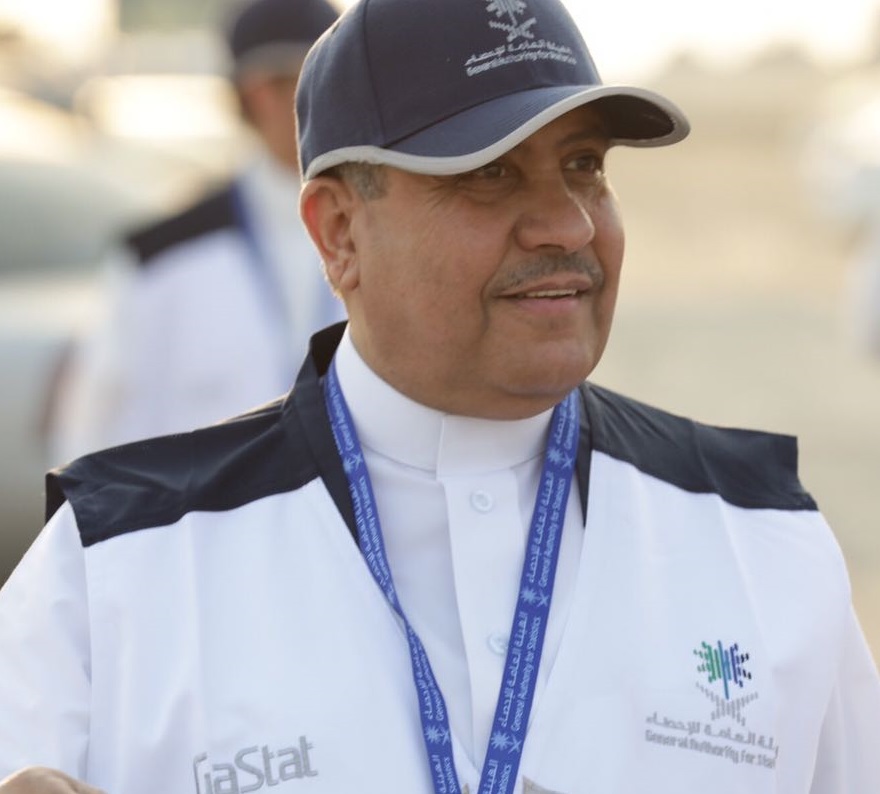
" الإحصاء ": الإعلان النهائي لأعداد حجاج 1438 هـ بعد مغيب شمس يوم عرفة

قرابة 24 مليون حاج خلال عشر سنوات تشرفت بخدمتهم المملكة العربية السعودية
GaStat Enumerates Pilgrims Every Year
Saudi Arabia has been honored to serve nearly 24 million pilgrims in 10 years
According to the official statistics of the General Authority for Statistics (GaStat), the total number of pilgrims that Saudi Arabia has been honored to serve during the last ten years has reached 23,935,354 pilgrims. The last Hajj season (1437H) recorded the lowest number of pilgrims during the last ten years as it reached 1,862,909 pilgrims. While the year (1433H) recorded the highest number of pilgrims during the last ten years as it reached 3,161,573 pilgrims.
The official spokesman of Gastat, Mr.Taiseer Almofarrej, explained that the task of pilgrims enumeration every years is one of the tasks that Gastat has the honor of. It started since 1390H since Gastat was called (the Central Department of statistics), in order to provide accurate information that helps all state agencies in planning and development of everything related to serving Hajj visitors. This mission continued during all these years to witness developments and enhancements in the enumeration techniques every year to be more accurate and comprehensive. Mr. Almofarrej added that the Hajj statistics program aims at the completion of all future planning programs to ensure providing the necessary services needed by the guest of Makkah, whether social, health, security, food, or transportation services. This is done through using a time series of accurate data about the number of pilgrims, in addition to the estimation of labor forces needed for providing the necessary services for pilgrims during Hajj season every year. The data and number of pilgrims is also used by relevant systems who studies the preparations and main facilities in Makkah city and holy places, and take it into consideration when preparing the necessary plans. In addition, accurate data and information about Hajj statistics is provided to researchers, students, and individuals who are interested in this field. The data is also used in the evaluation of activities and events made by relevant entities who serve pilgrims, in addition to identify the method of arrival of domestic and international pilgrims.
The official spokesman stressed that GaStat will be announcing the number of pilgrims periodically starting from the 1st of Dhu al-Hijjah. GaStat will also announce the final and official number of pilgrims on the evening of the ninth day of Dhu al-Hijjah through the Hajj statistics bulletin. The Bulletin will include detailed results about: number of domestic pilgrims, international pilgrims, pilgrims by gender, pilgrims by nationality, pilgrims by arrival destination, number of cars carrying pilgrims by type, and other detailed data.
It is worth mentioning that the number of pilgrims in the last ten years exceeded 3 Million pilgrims in one time, and it exceeded 6 Million pilgrims 6 times. The number was lower than 2 Million in 3 Hajj seasons, and last year was the lowest according to the following table:

الهيئة العامة للإحصاء تبدأ الخميس المقبل بزيارة أكثر من 57 ألف أسرة
In cooperation with the Communication and Information Technology Commission and the General Sport Authority
GaStat starts to visit more than 57,000 households next Thursday
The General Authority of Statistics (GaStat) will start next Thursday, 19 Shawwal 1438H (13 June 2017), to visit more than 57,000 households in all regions of the Kingdom in coopereation with the Communication and Information Technology Commission and the General Sport Authority to conduct 3 household surveys: the survey of ICT’s access and use for households and individuals, sports survey for households, and the labour force survey for the third quarter. GaStat calls upon all citizens and residents to cooperate with the statisticians working in the field in 13 regions of the Kingdom including their cities and provinces. The work of than 450 field researcher will continue until 25 Dhu al-Qa’dah 1438 H (17 august 2017).
GaStat official spokesman, Mr. Taiseer Almofarrej, explained that the household sport survey is one of the requirements of the Saudi Vision 2030 in cooperation with the General Sport Authority. It aims to provide recent indicators about the extent of playing sports for households. Through its results, stakeholders will learn about the reasons for playing sports or not and they will get updated statistics about the relationship of households with sports. It will also provide a comprehensive picture on the size of community participation in sports and physical activity. In addition, it will provide data on the ratio of sports practitioners within the household who practice sports on a regular basis, at least once a week. It also provides data on the percentage of sports practitioners in public facilities, clubs or sports centres, and the number of times a person is engaged in sports during the week, and the reasons why a person may not exercise.
Mr. Almofarrej added that this survey coincides with the Labour Force Survey for the third quarter of this year which aims to provide detailed data about national labour force, measure the rates of employment and unemployment, provide data on employed and unemployed individuals, identifying the average monthly wages of the workers, provide data on the average weekly actual working hours by occupation, and economic activity of workers, and data on formal and informal workers. The results will be published in the Labour Market Bulletin, which was recently launched by GaStat.
Regarding the survey of ICT’s access and use for individuals and households, GaStat’s official spokesman said that in cooperation with the Communication and Information Technology Commission aims at providing updated data and indicators on the extent of household and individual’s access to information and communication technologies. It includes: the availability of communication and information technology devices, the extent of using mail services by households and household access to ICTs. The survey will also provide individual data including: the extent to which information technologies are used for individuals, age groups, educational and occupational status, difficulties, places of use and reasons for not using ICTs.
On the other hand, Mr. Taiseer Almofarrej confirmed that the GaStat has been keen to involve all relevant parties from data producers and users in developing its statistical products from creation to publishing through integrated partnership. A training program was recently held for the supervisors of these surveys, in which the Communications and Information Technology Commission and the General Sport Authority has participated.
GaStat has confirmed that all information will be treated as an information basis which is reliable and can be used by development decision-makers in all relevant government entities that will serve the interest of citizens and residents. Gastat also has mentioned that al statistical researchers carry official badges and they are officially authorized to collect data to be kept confidential in accordance with the general statistics system issued by the Council of Ministers. GaStat also made available on its official website www.stats.gov.sa the opportunity for students and interested individuals to view field search forms on which the data will be collected. All households and establishments may inquire through the toll free number 8001240440 about this work or other coming work.
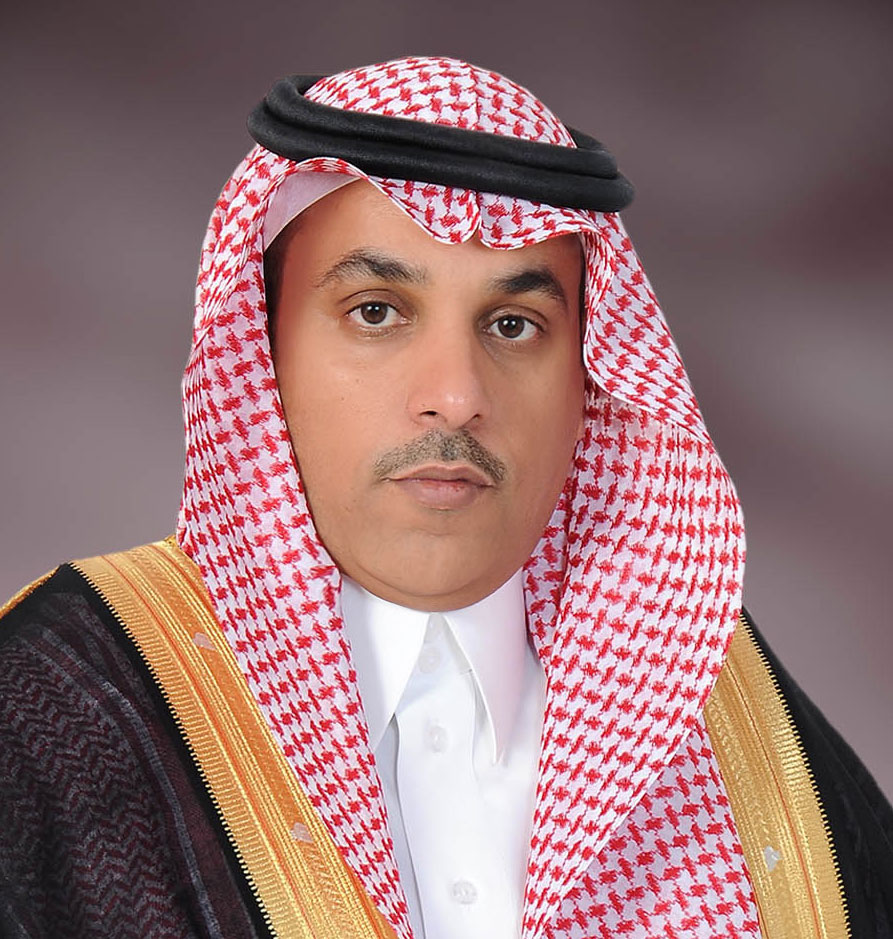
مجلس الوزراء يوافق على التعاون الإحصائي مع هولندا وكوريا
Administrative-based Census and Centralized Data System Included
Cabinet Okays Statistical Cooperation with Netherlands and Korea
As part of its continuous support for statistical sector in Saudi Arabia, the Cabinet has approved in its sessions held on Ramadan 3rd and 17th respectively, the mandate to the Minister of Economy and Planning or his nominee for holding discussions with the Dutch and Korean sides on statistical development, and to sign memorandums of understanding (MoU) with them in this regard.
His Excellency President of the General Authority for Statistics (GAStat) Dr. Fahad Sulaiman Altekhaifi hailed the decision stressing:
“The statistics sector in Saudi Arabia receives ongoing support from our leaders at all levels; establishing the importance of statistics in development. These agreements aim to develop our statistical endeavors based on the world’s best practices in the field. Also, our discussions with the Dutch side will address developing modern mechanisms to implement register-based census in compliance with the internationally recognized standards, including a defined statistical approach to run censuses, document data, and to store them in statistical archives. Also, this includes developing the necessary technical tools to create a comprehensive system from census databases, and leverage them in statistical surveys and studies, those implemented by GAStat, public or private agencies. The bilateral cooperation between KSA and Netherlands enhances sharing statistical awareness programs to ensure community participation and to share success stories, to boost the exchange of expertise between both countries, and to take part in statistics-related training courses, conferences, forums, seminars and workshops."
As far as cooperation with Korea is concerned, GAStat President noted: “It features the development of technical mechanisms to collect and publish statistics in accordance with the internationally recognized standards, to identify basics needed to create a comprehensive system using various statistical databases and to share expertise as to the requirements to build a centralized data center, which will automatically be connected to all public agencies. Also, this is meant to secure the tools needed to activate these centers, and to develop public policies and mechanisms to provide statistics-based technical and advisory services to both public and private entities.
It should be noted that GAStat has undertaken a series of preparatory steps with several local and international organizations towards finalizing the preparations for the (1440H – 2020) census, which will be the first register-based census using administrative records (civil registration number, national ID number, resident ID number), as well as the national home address. Unlike earlier censuses, this census features a comprehensive electronic connectivity with a number of stakeholders, including the National Information Center, Ministry of Education, Ministry of Housing, the Saudi Post, as well as various sectors in concern with the citizen, resident and housing data.
